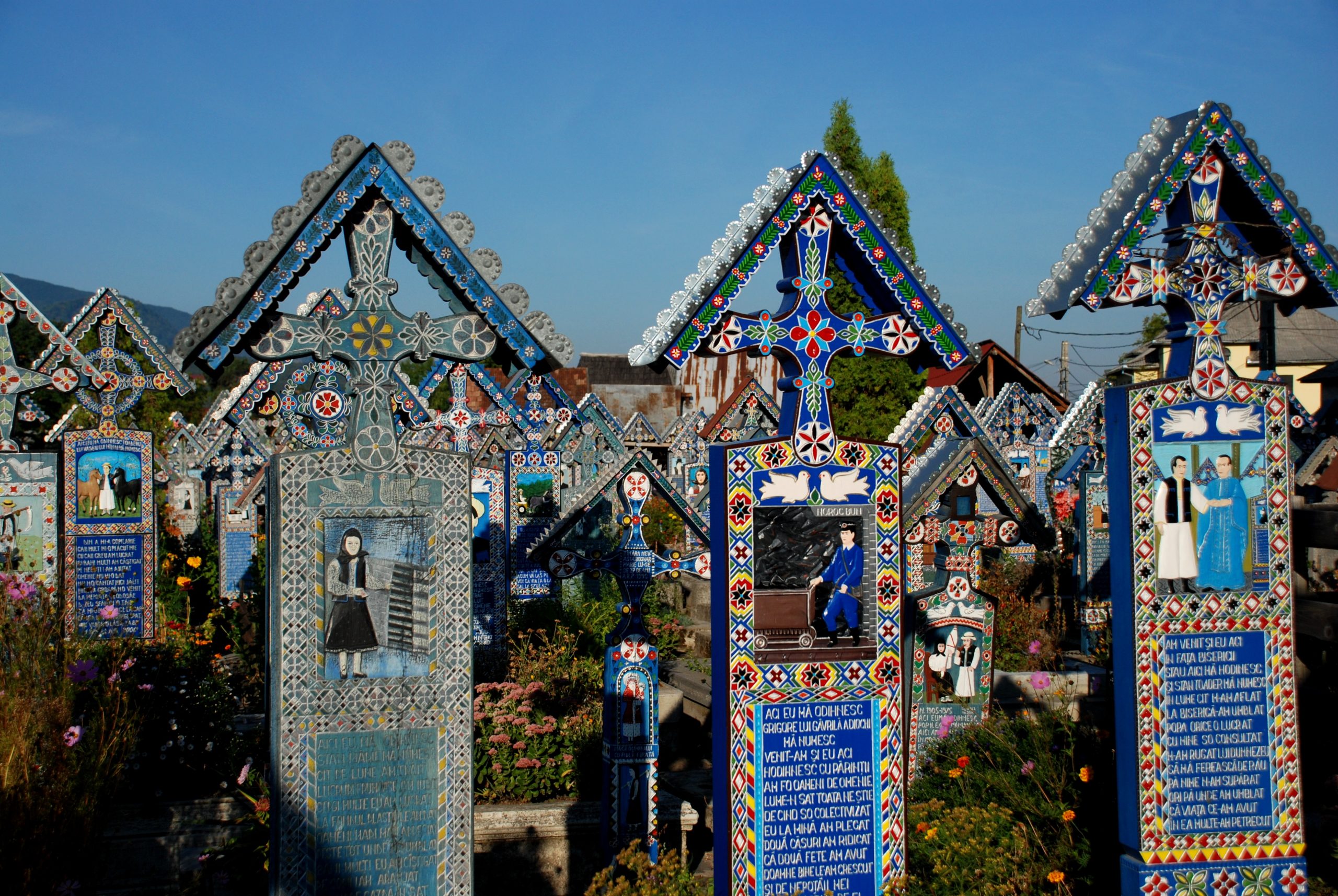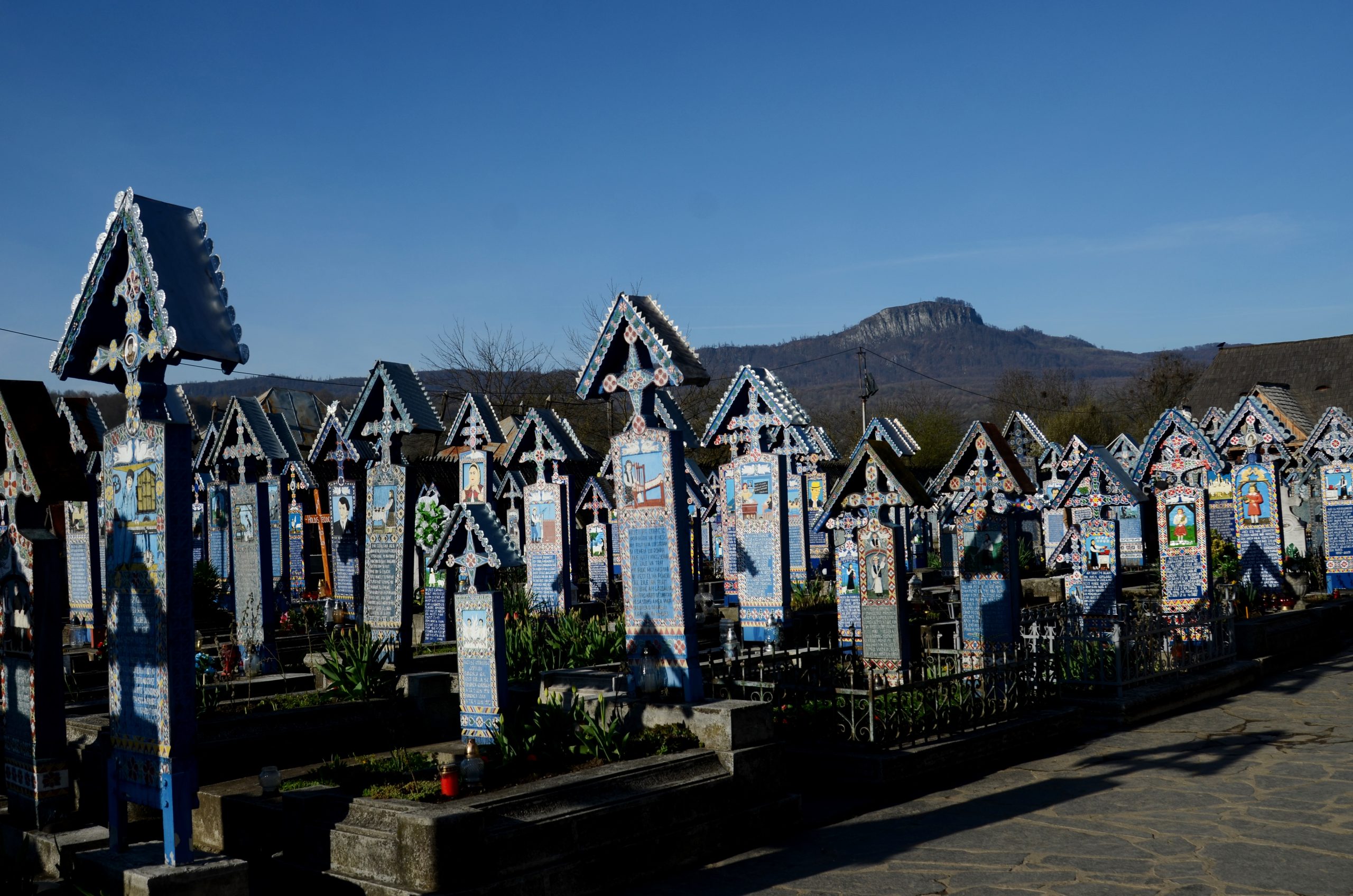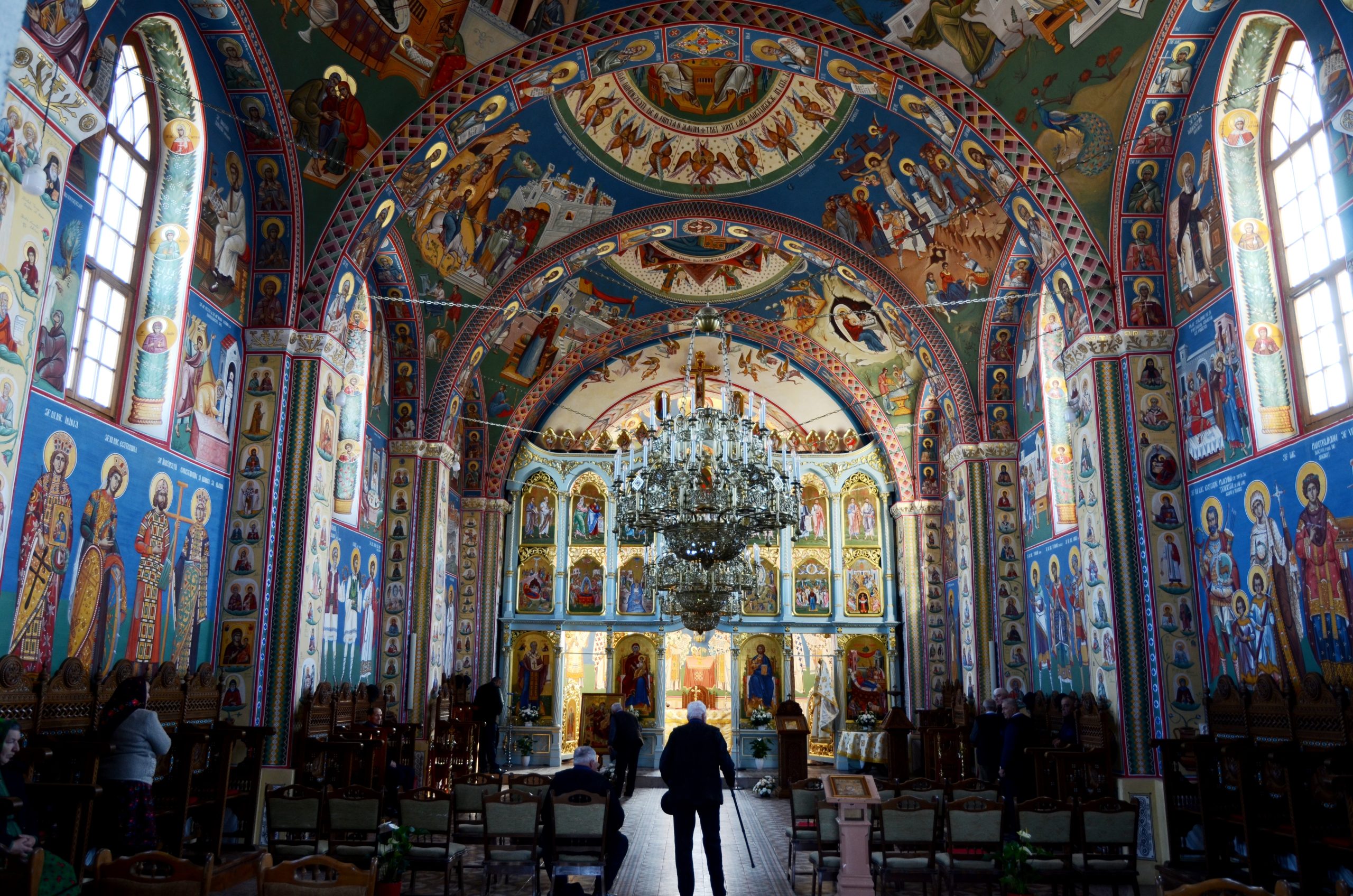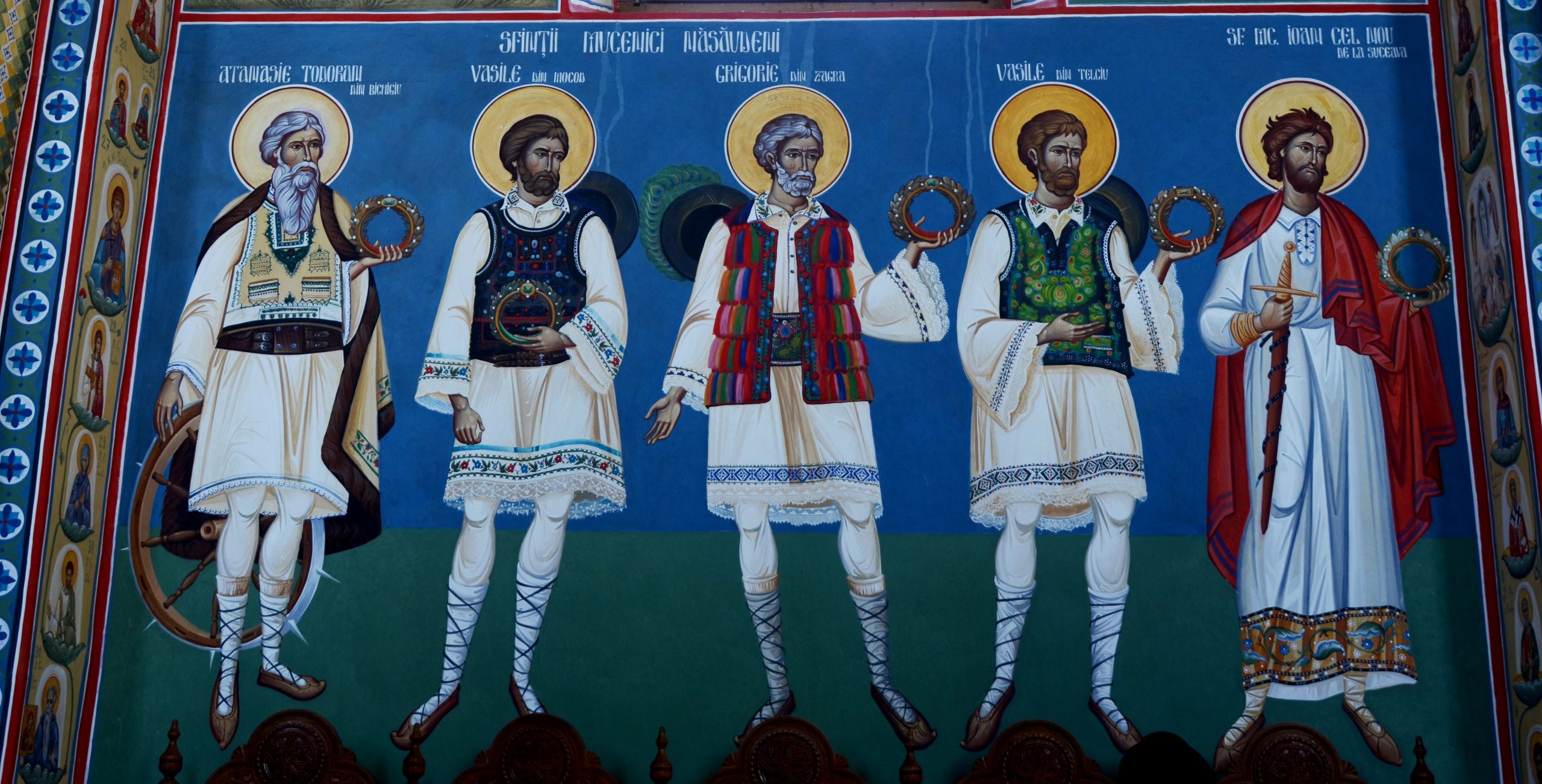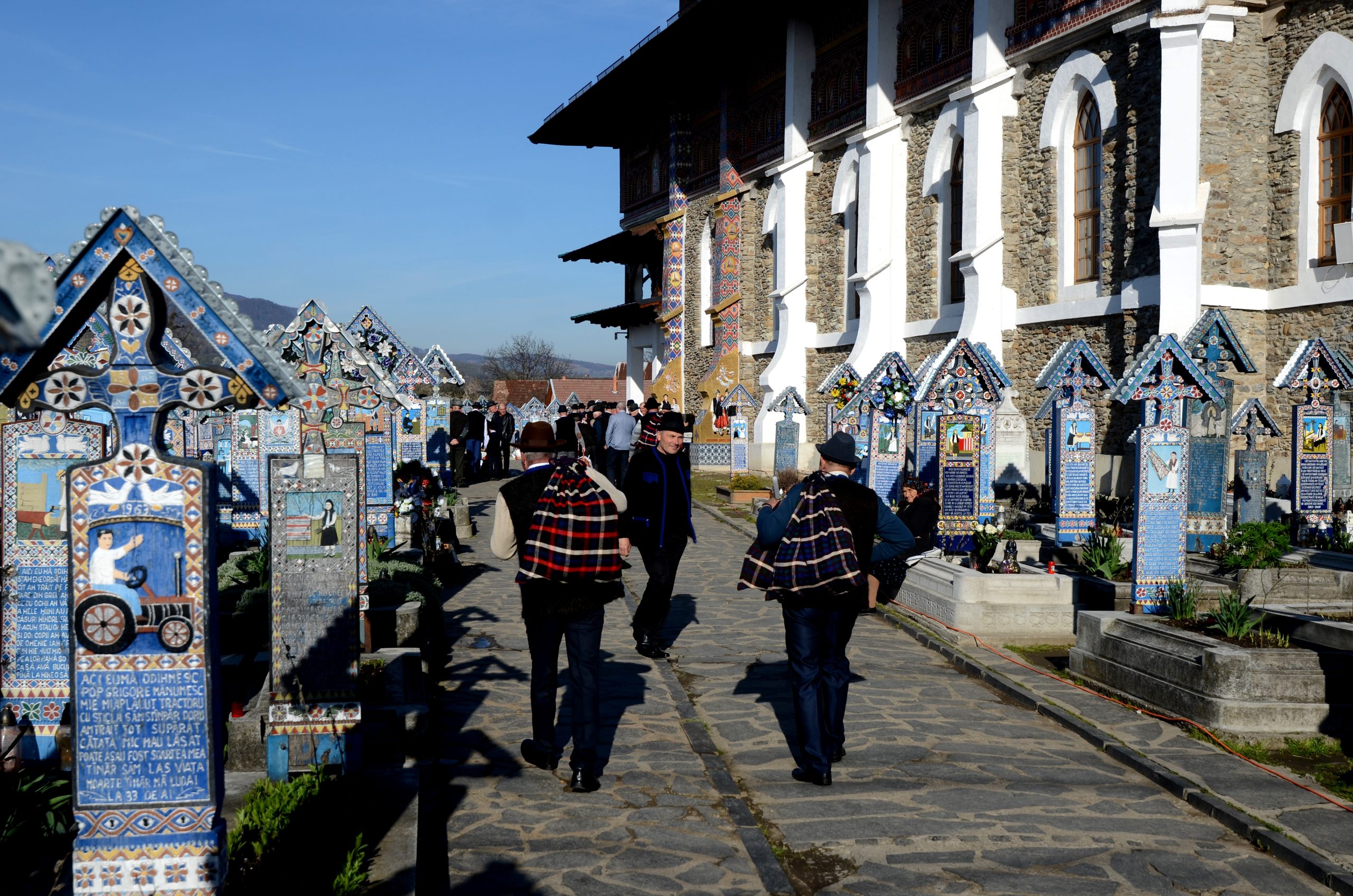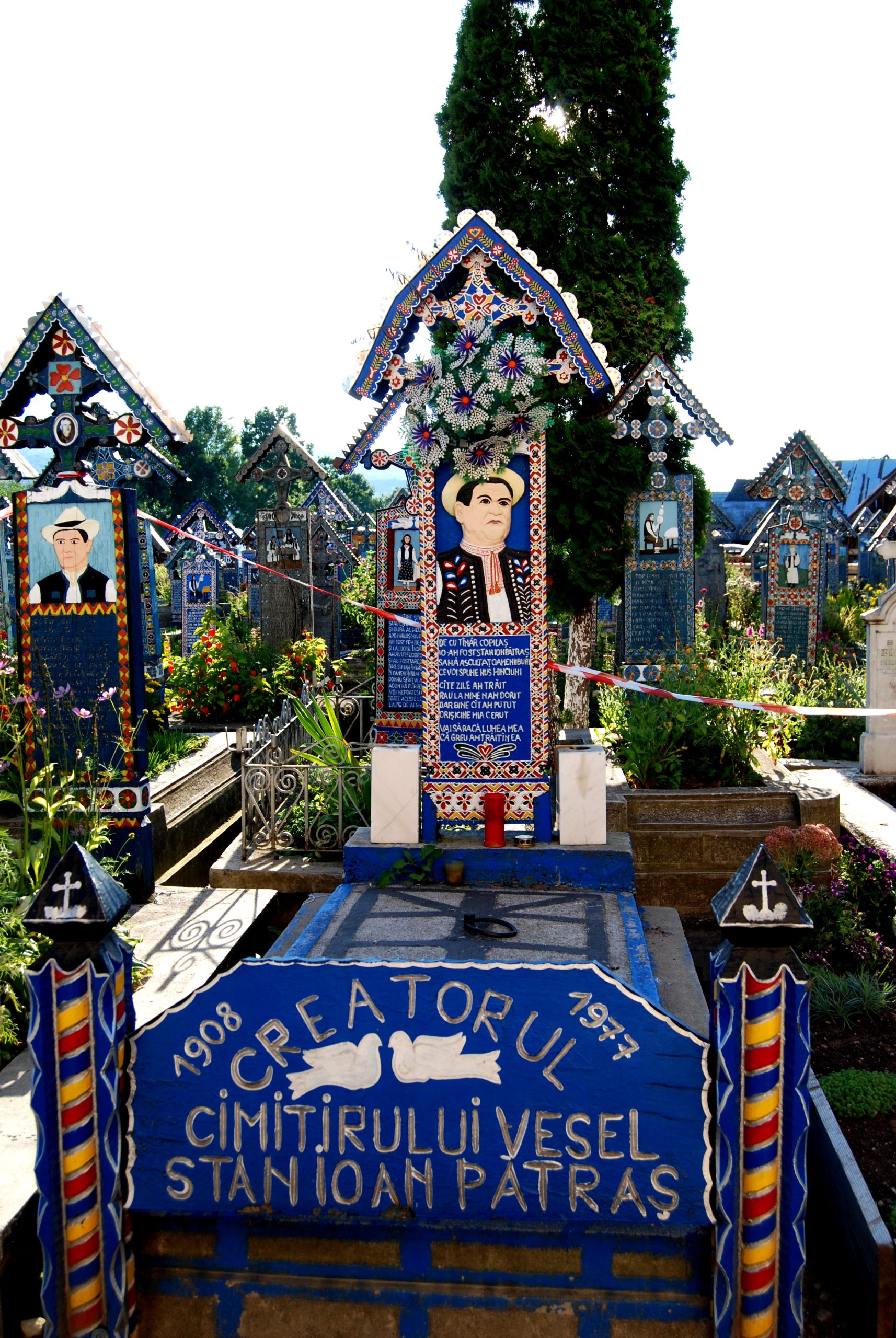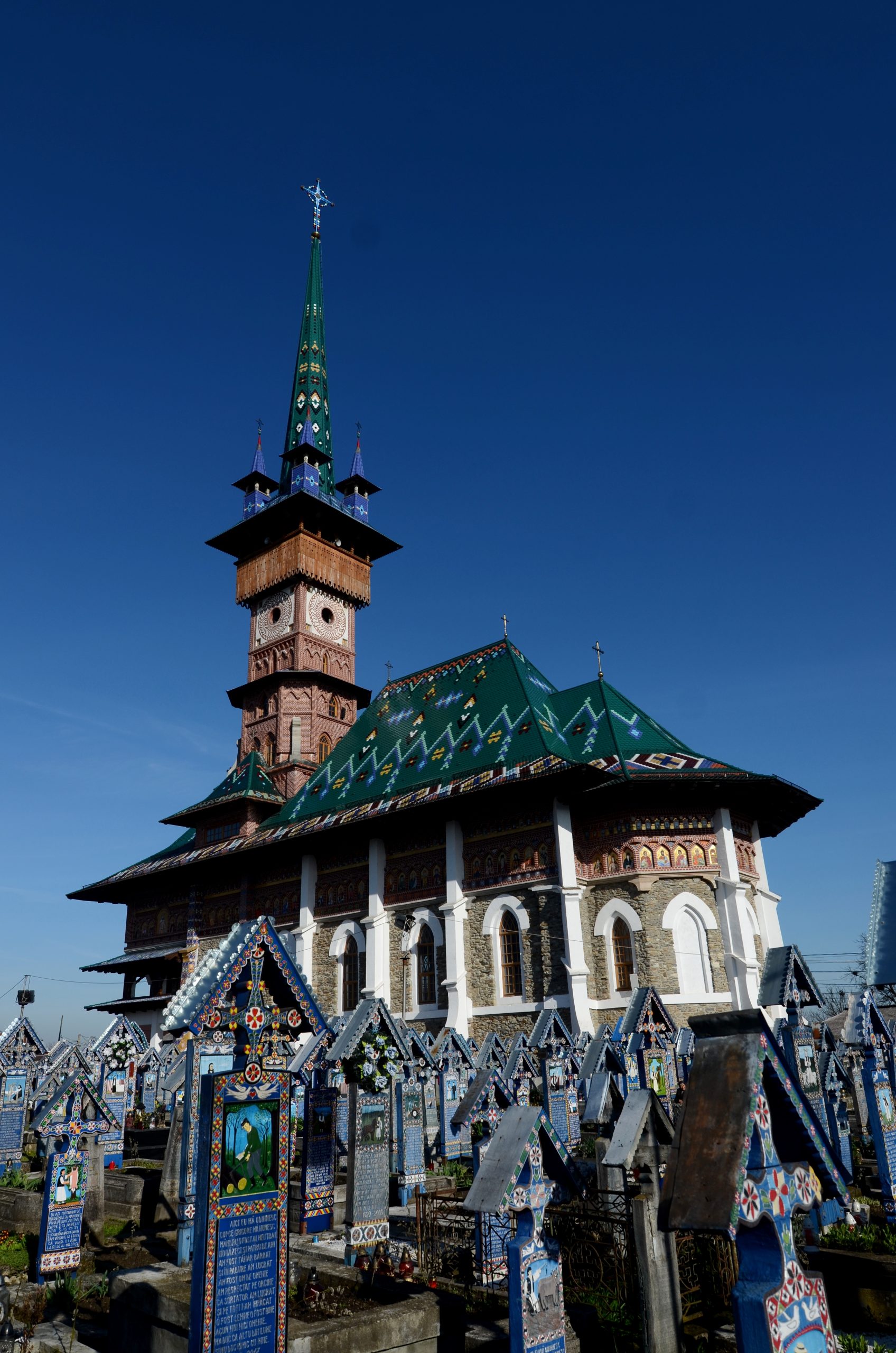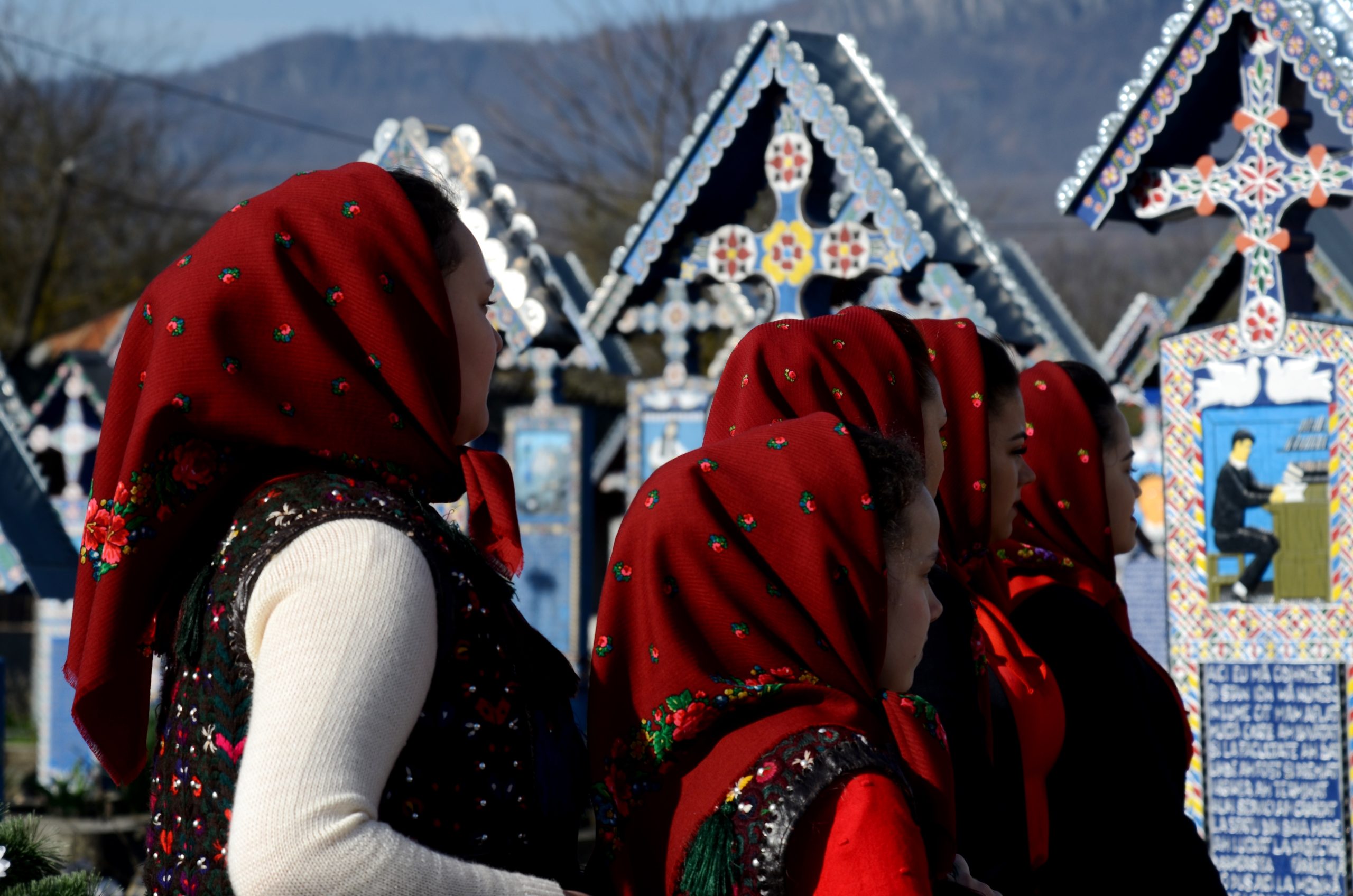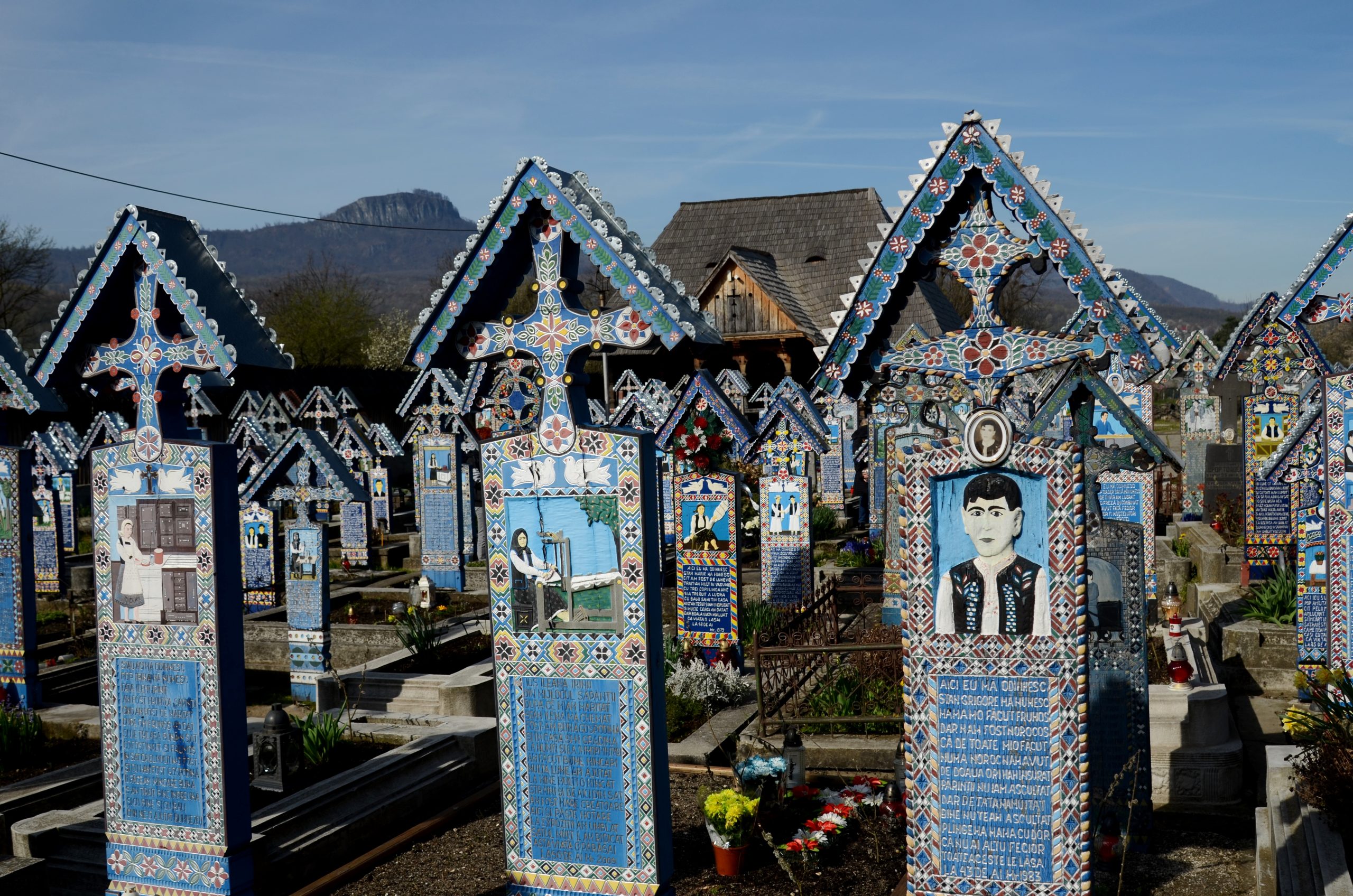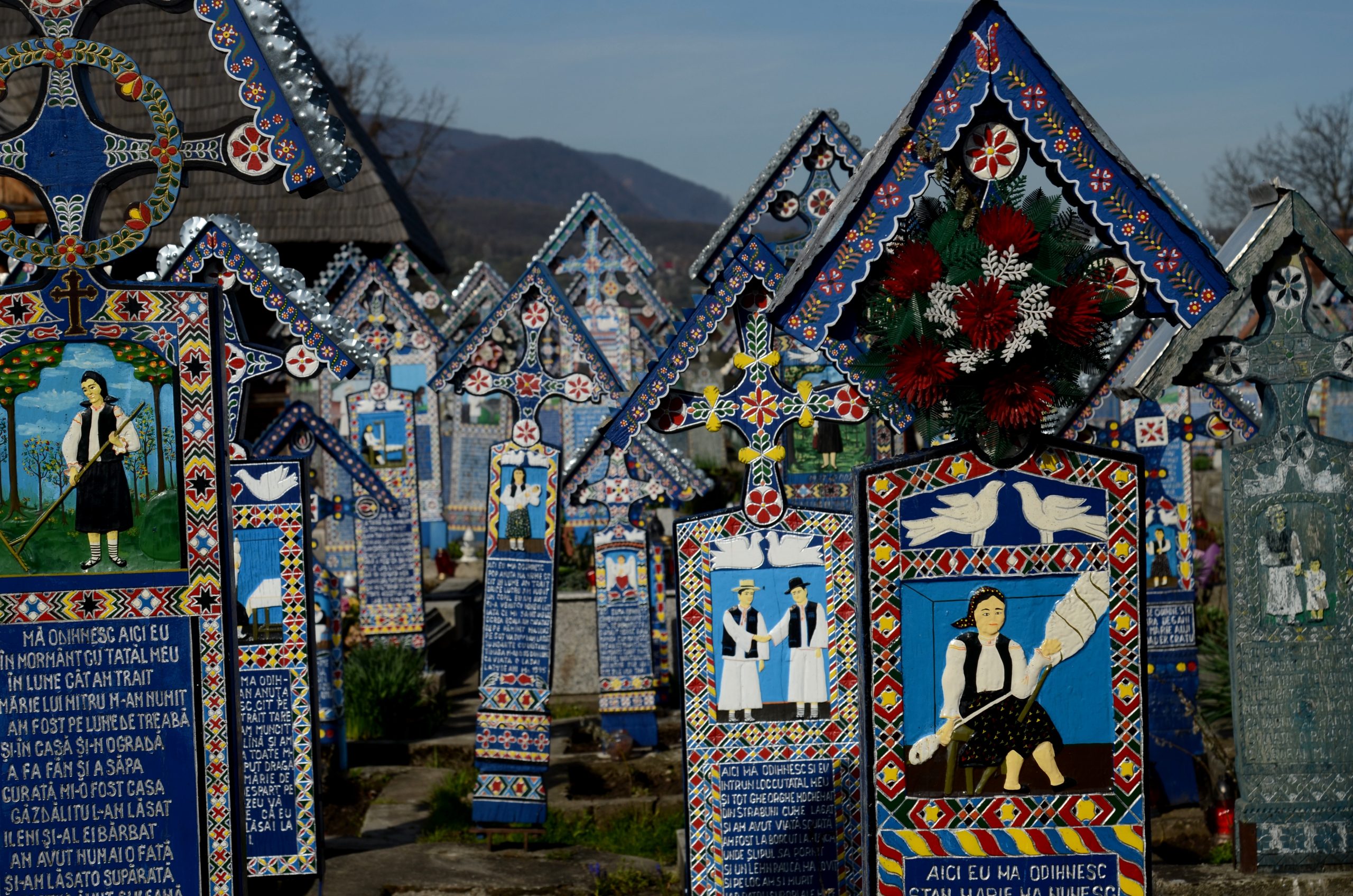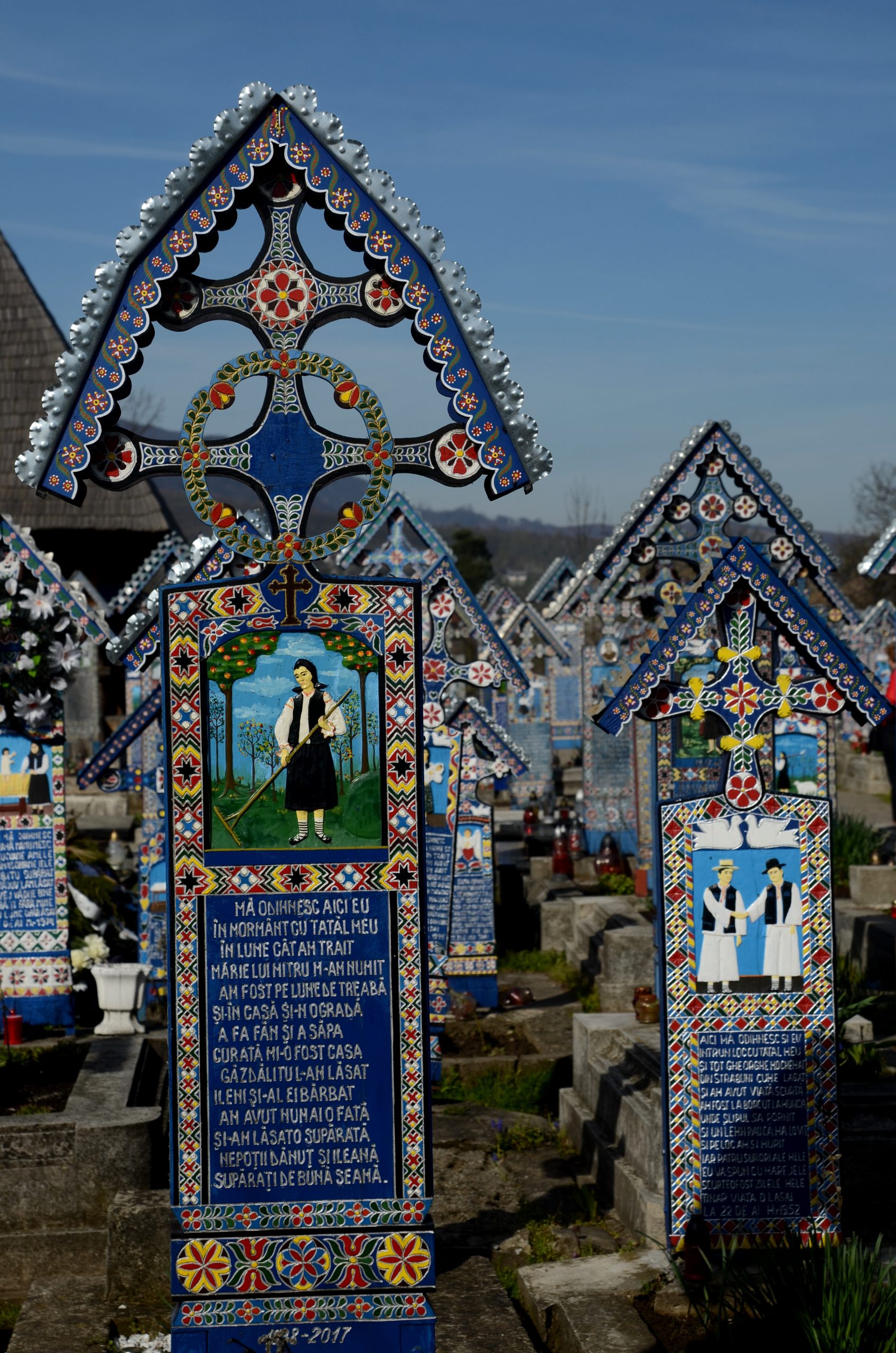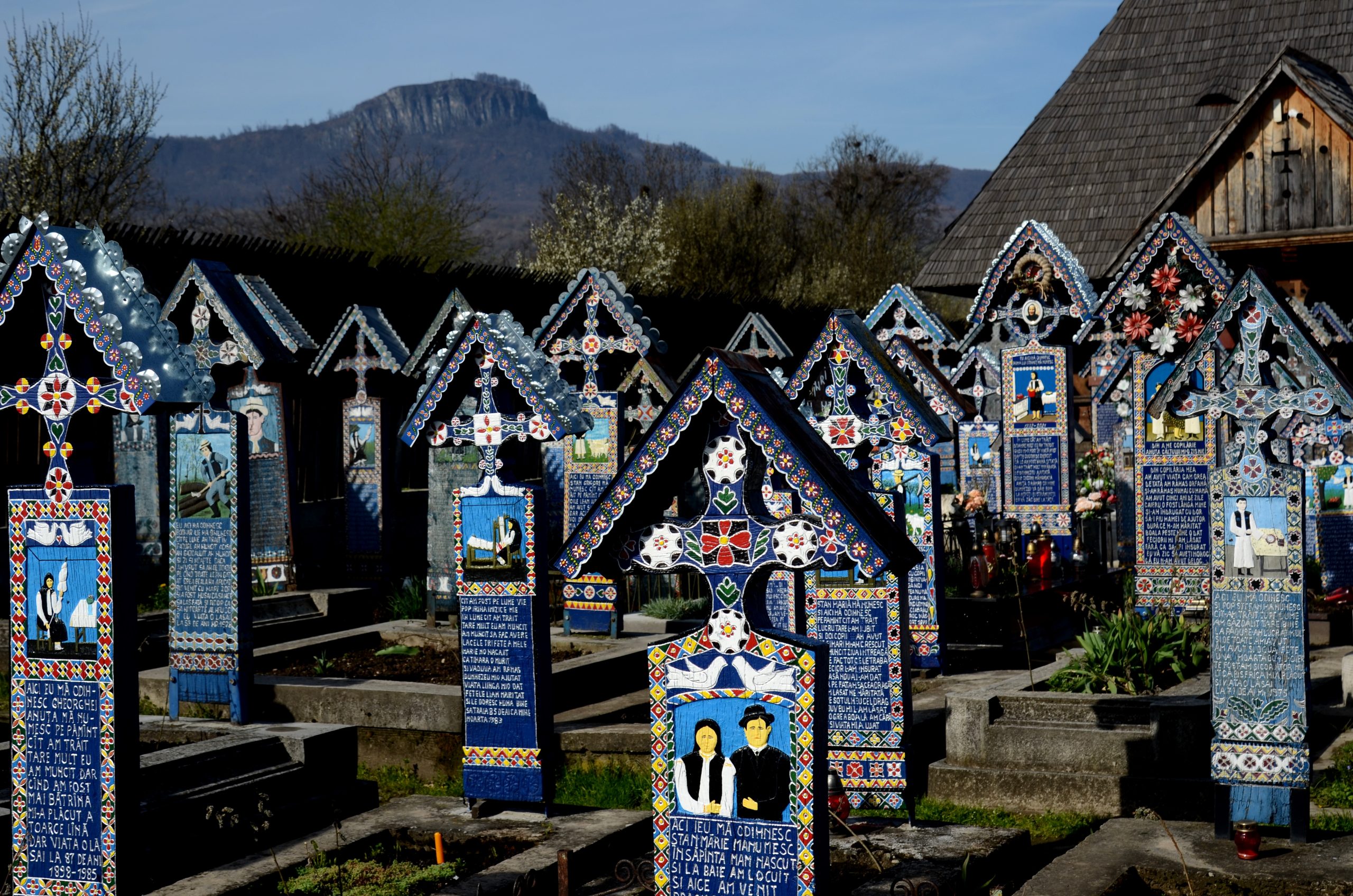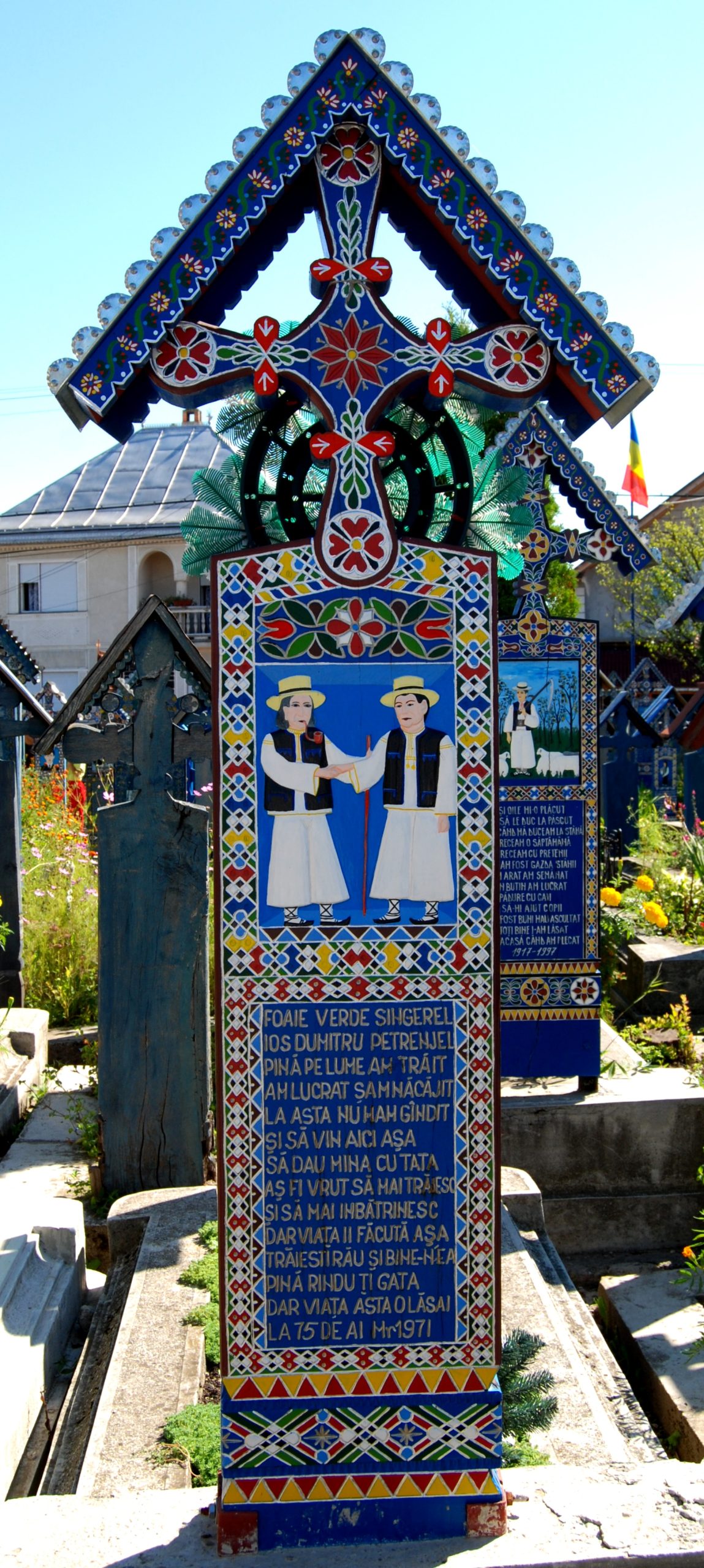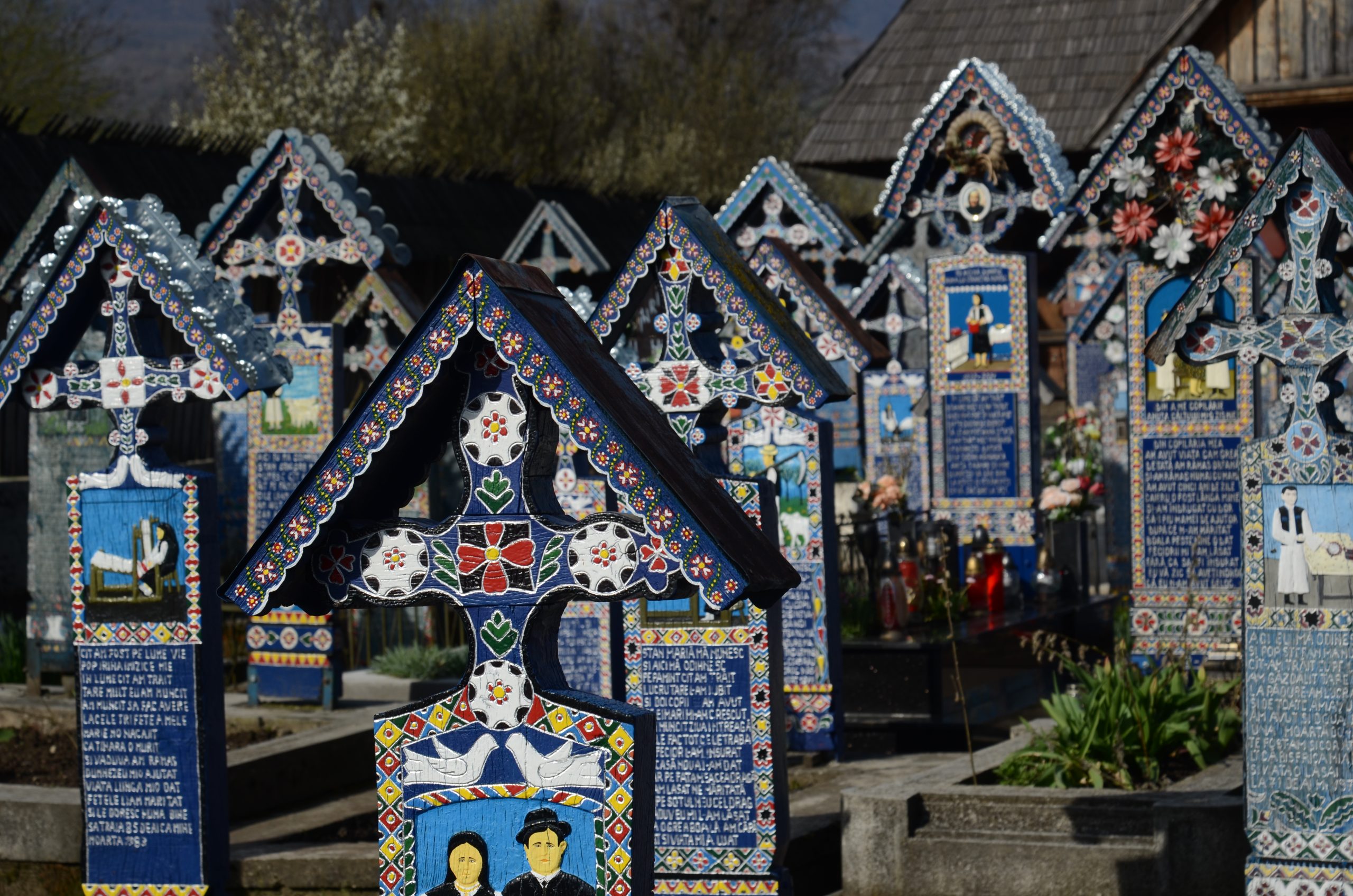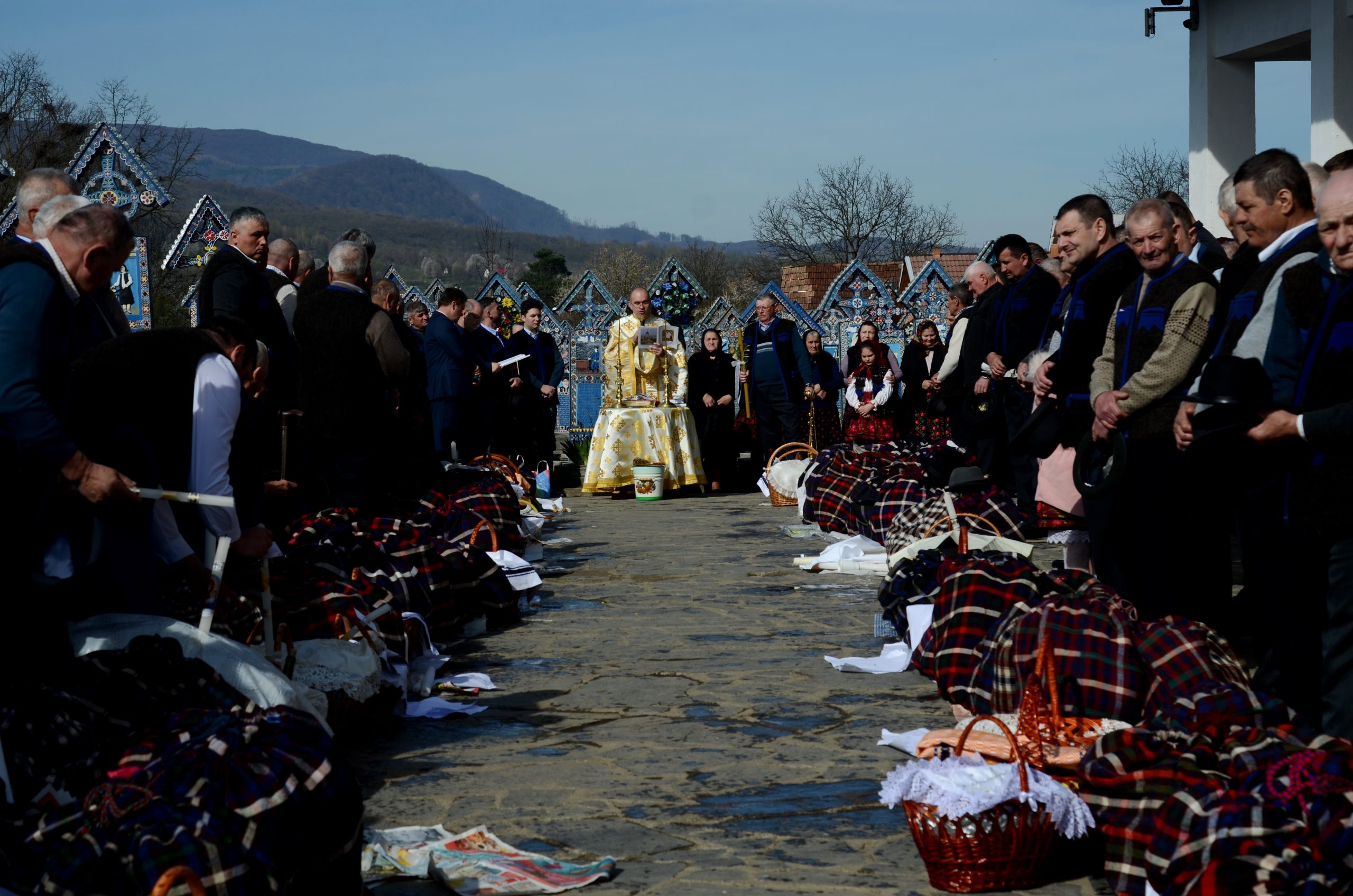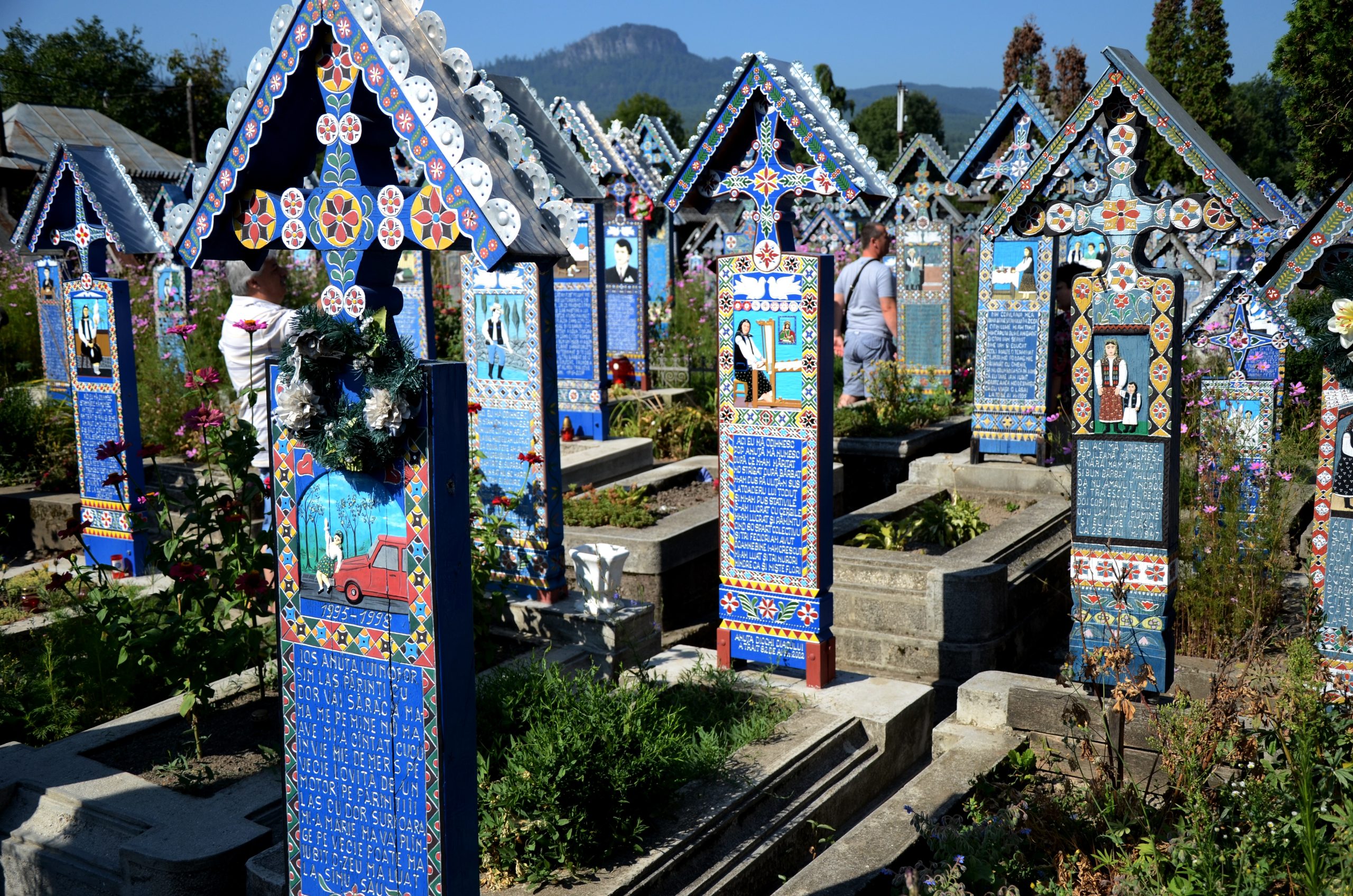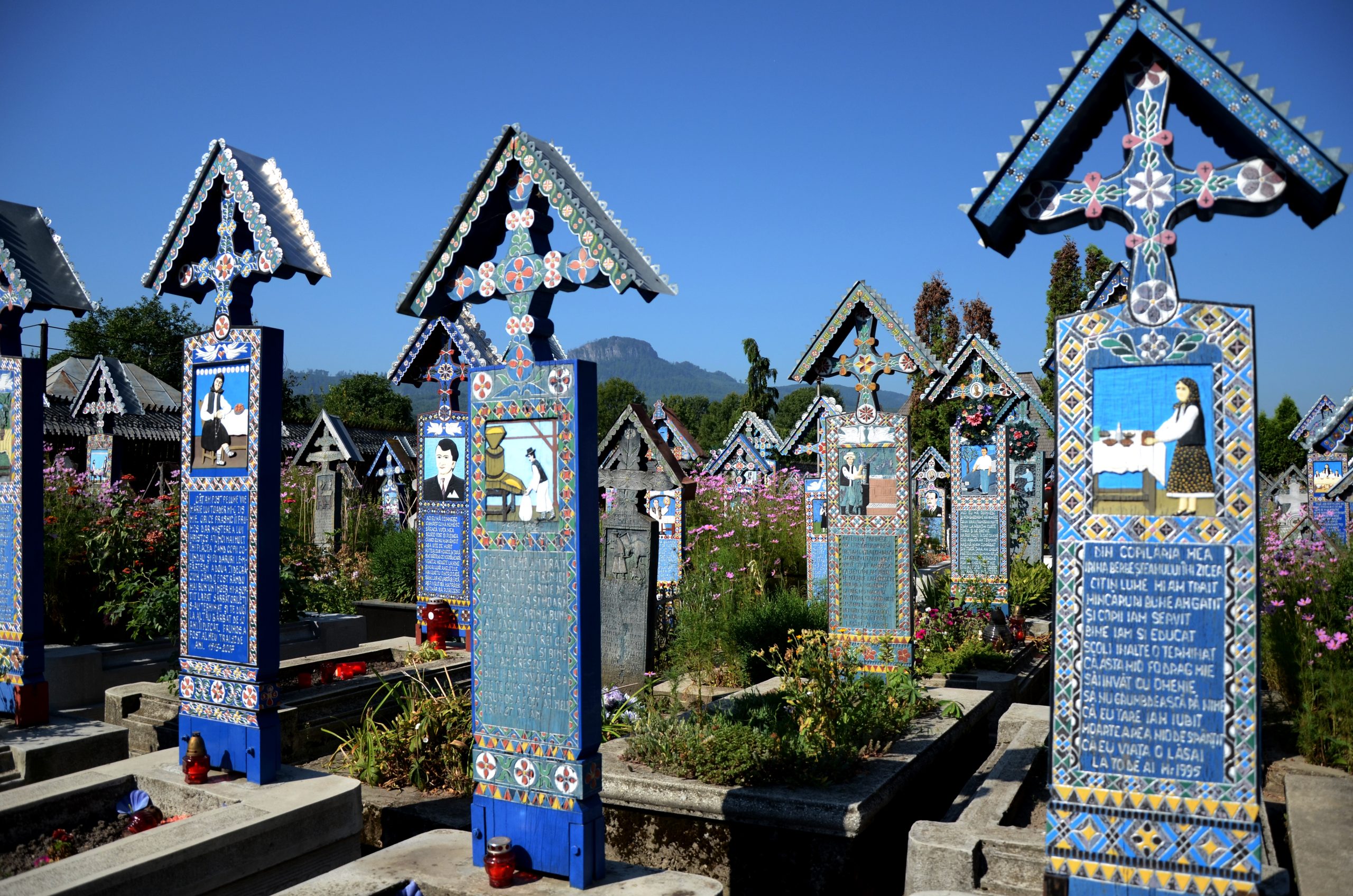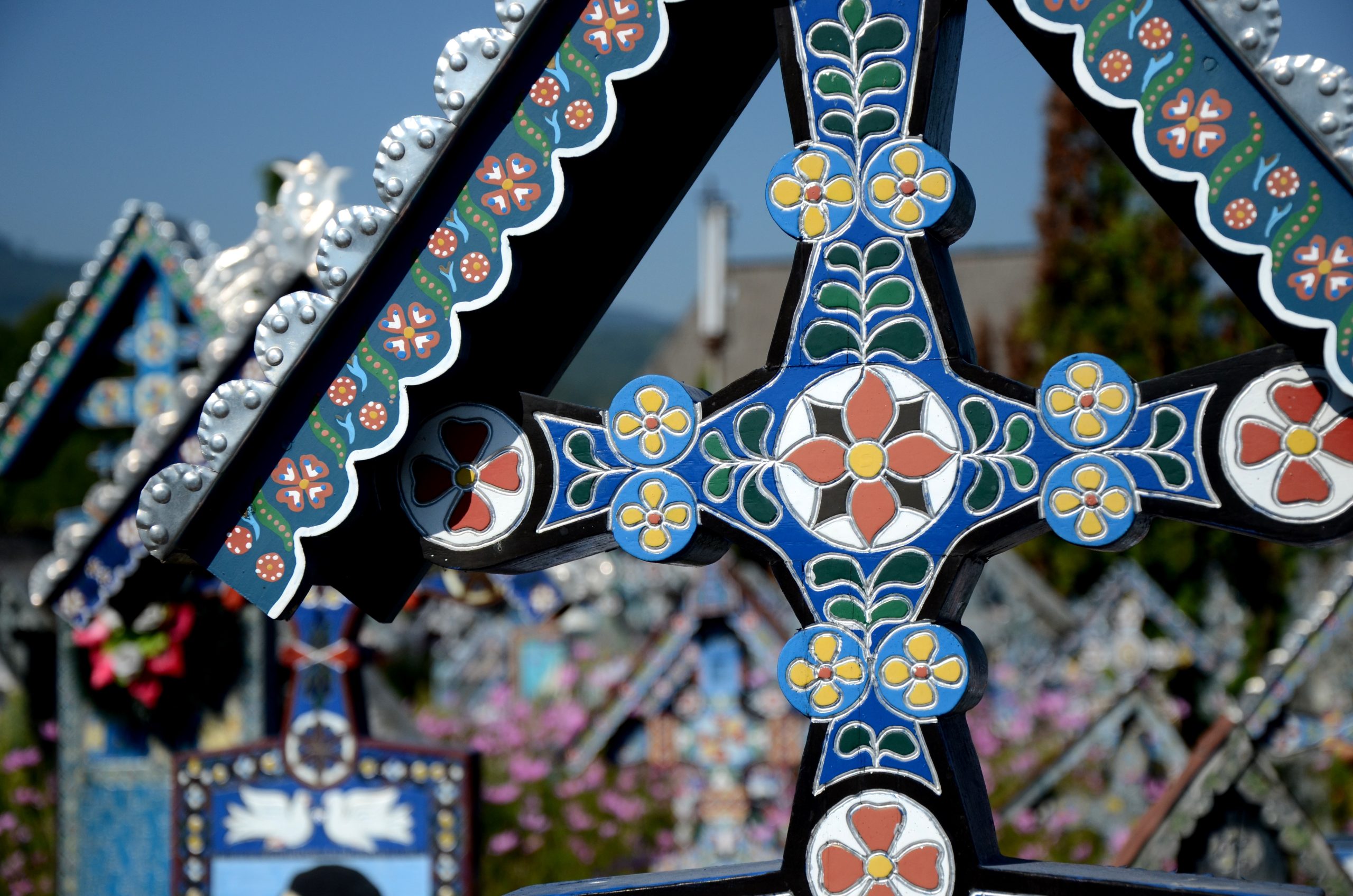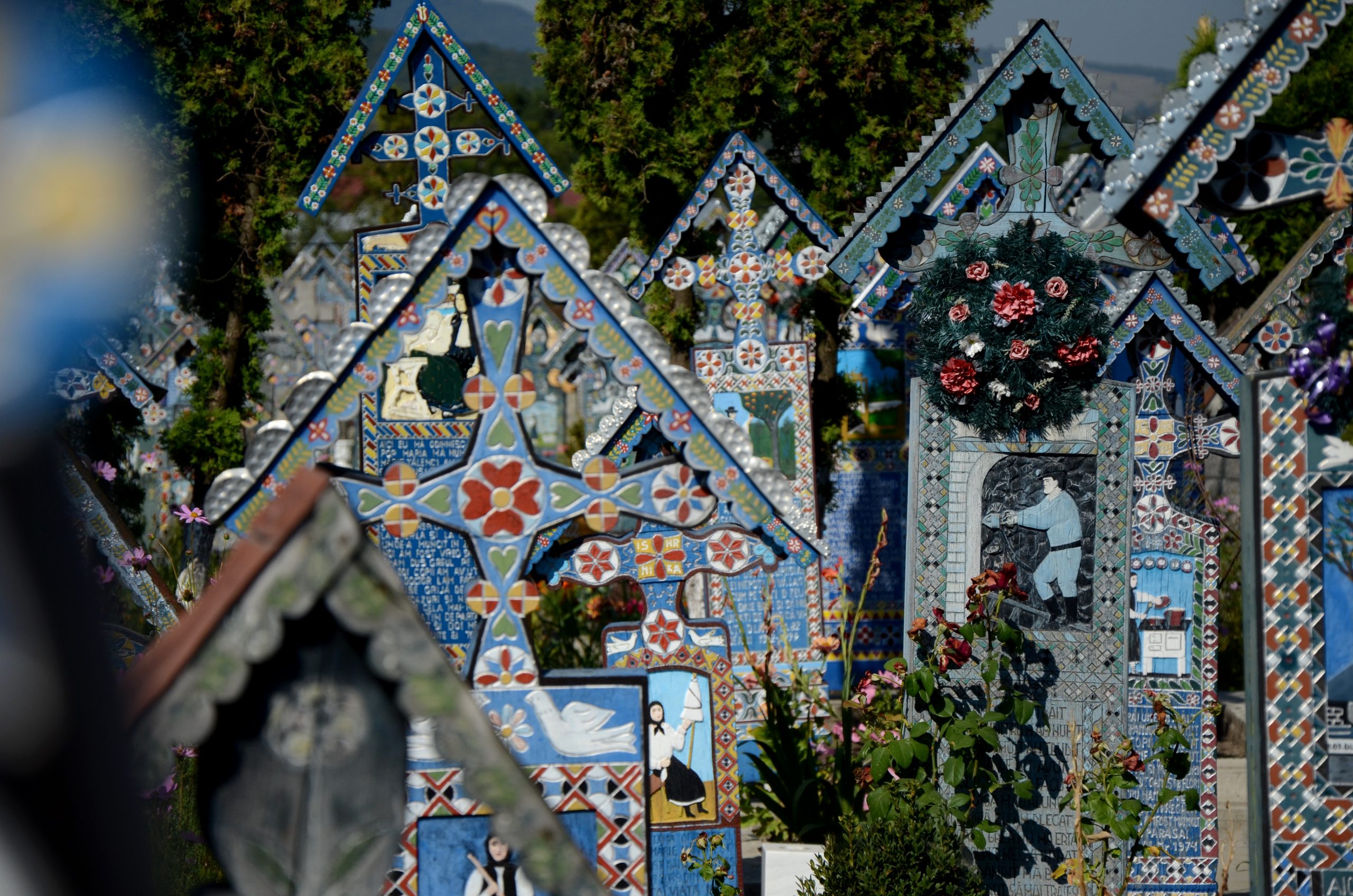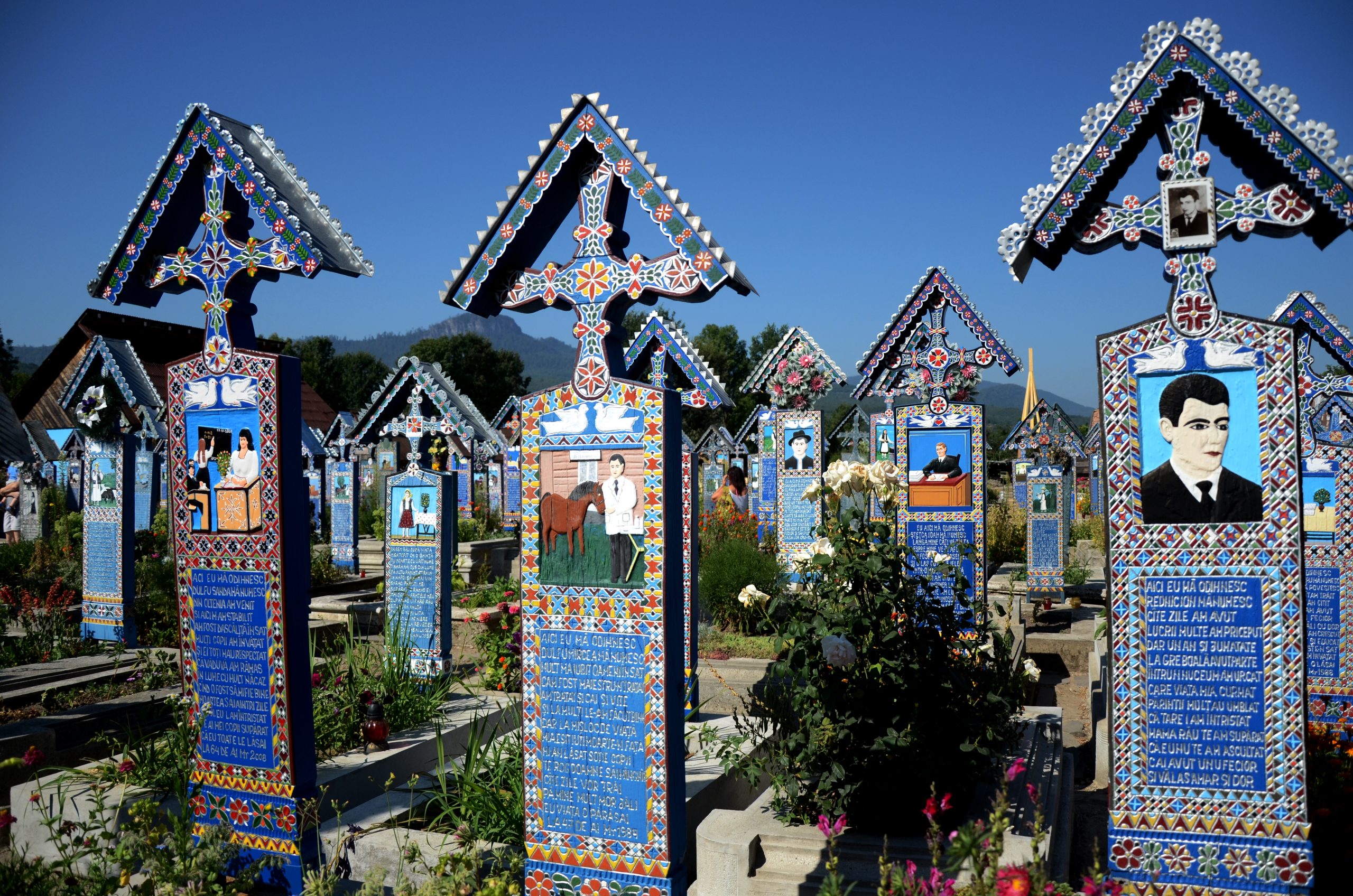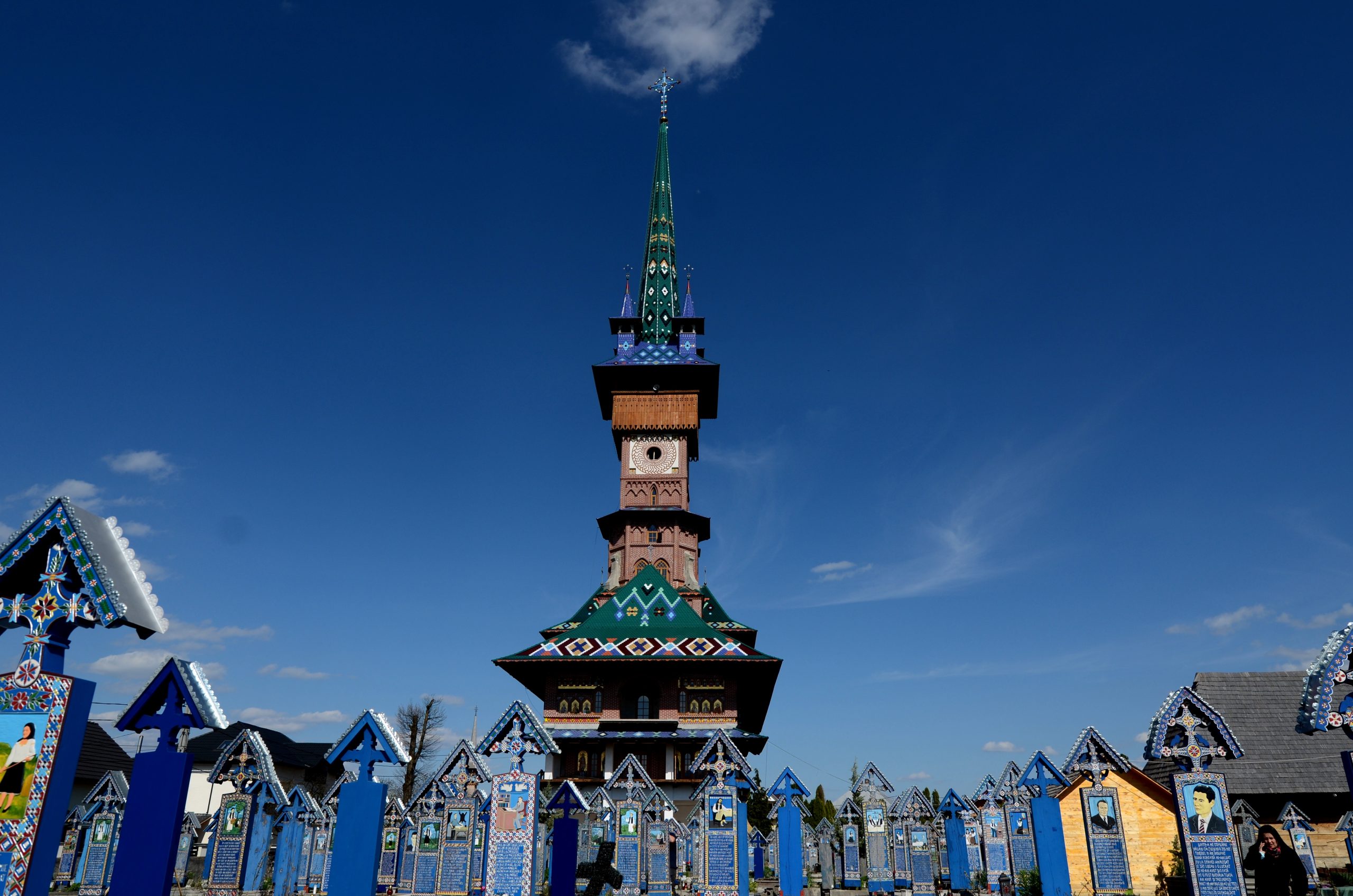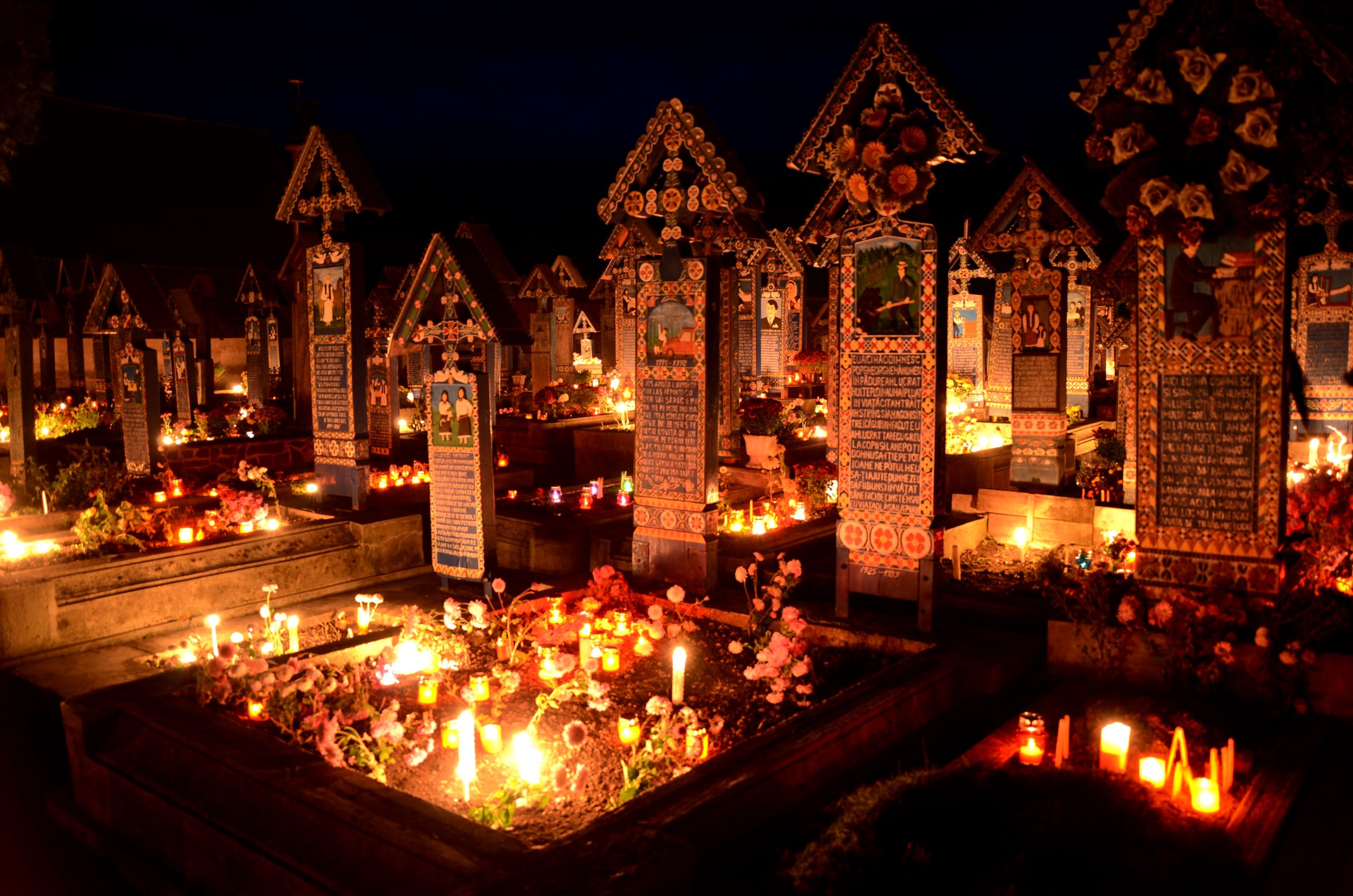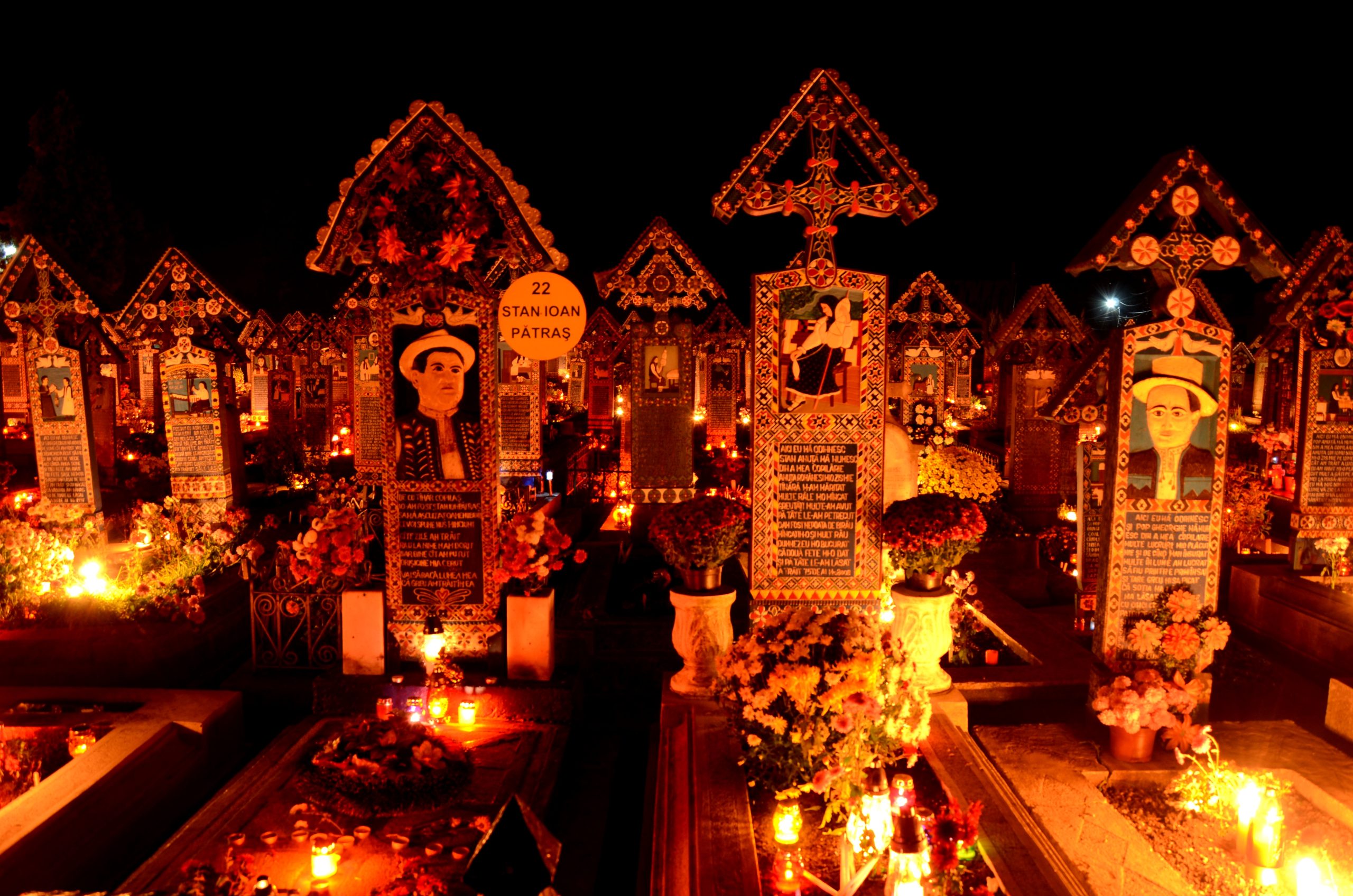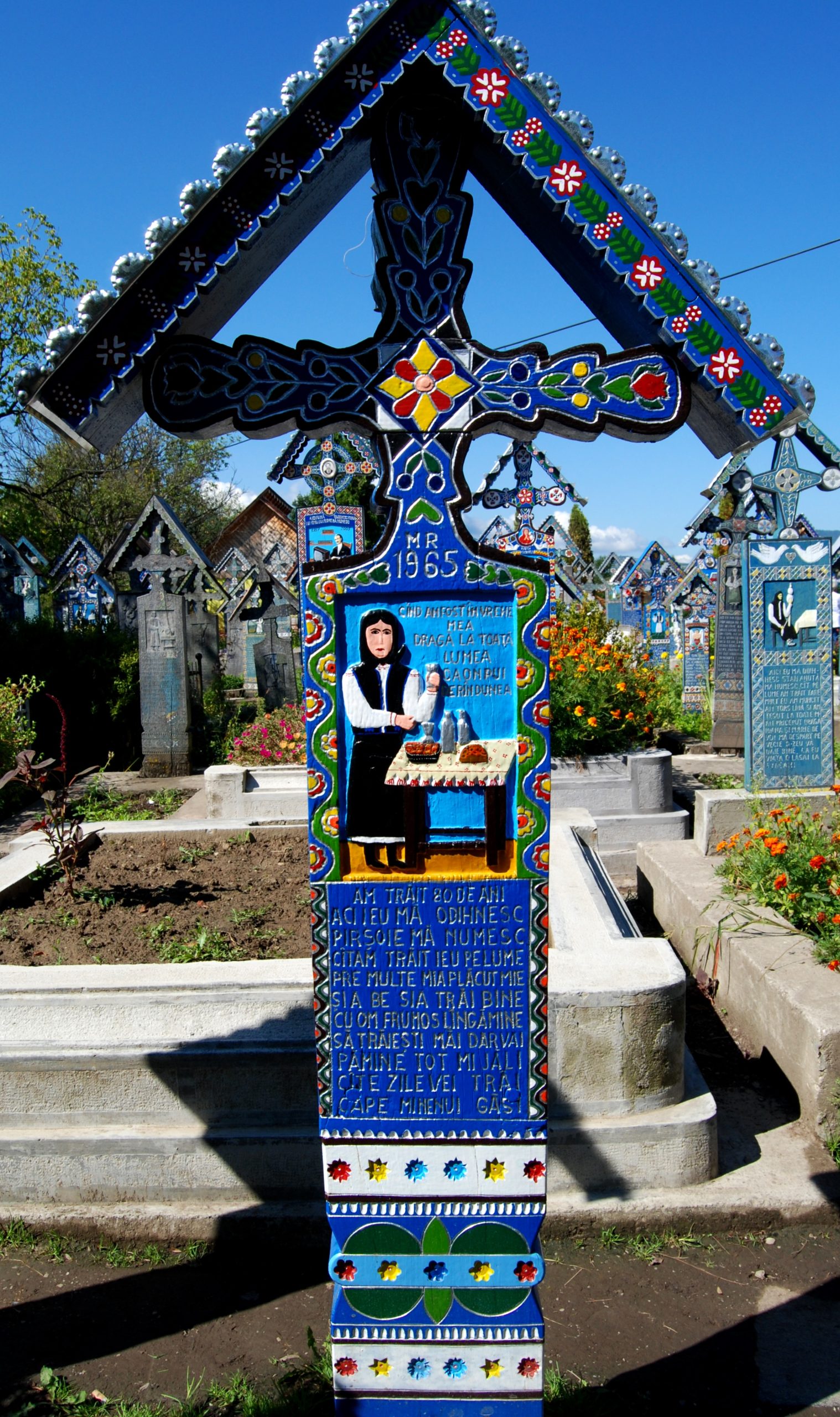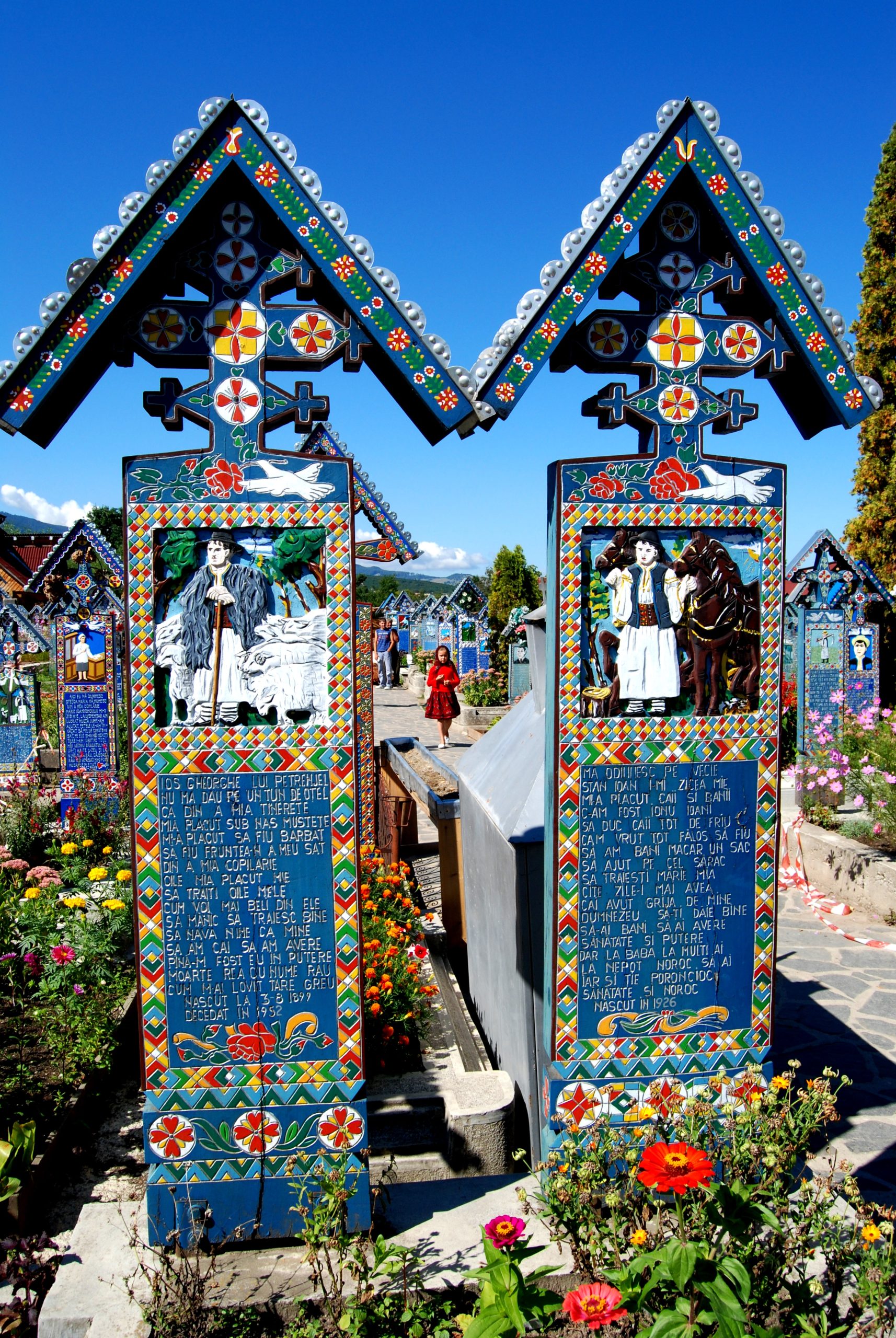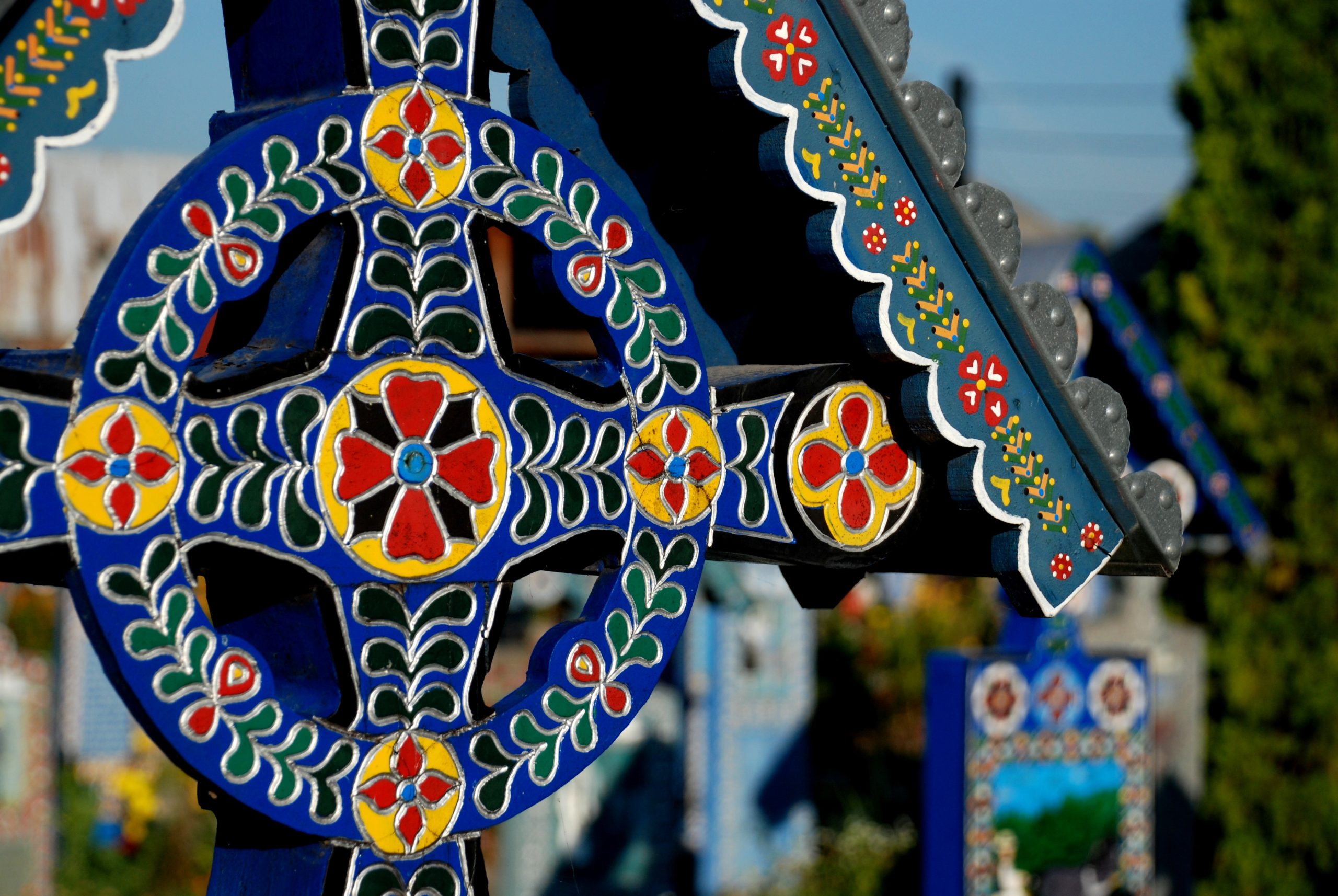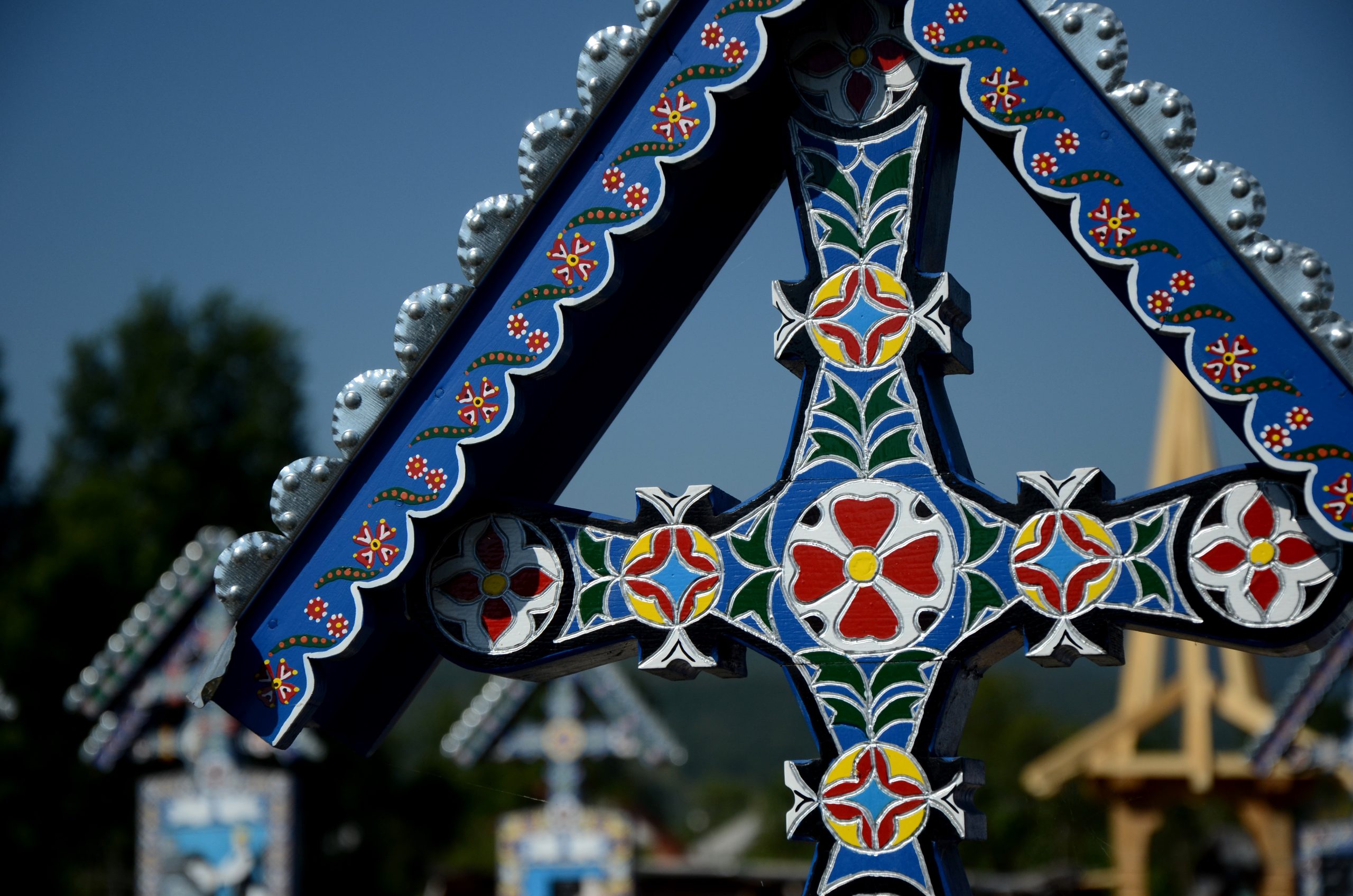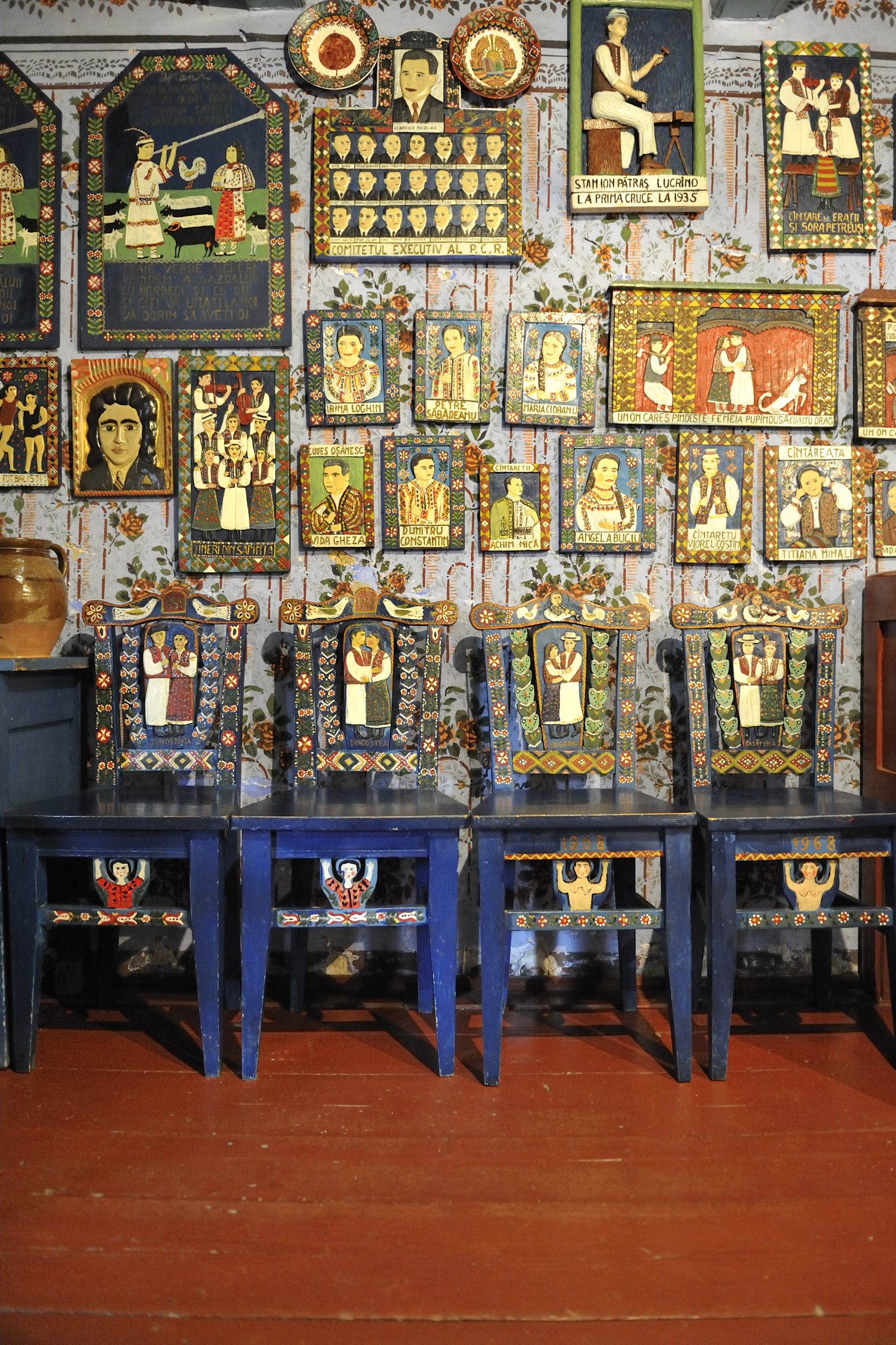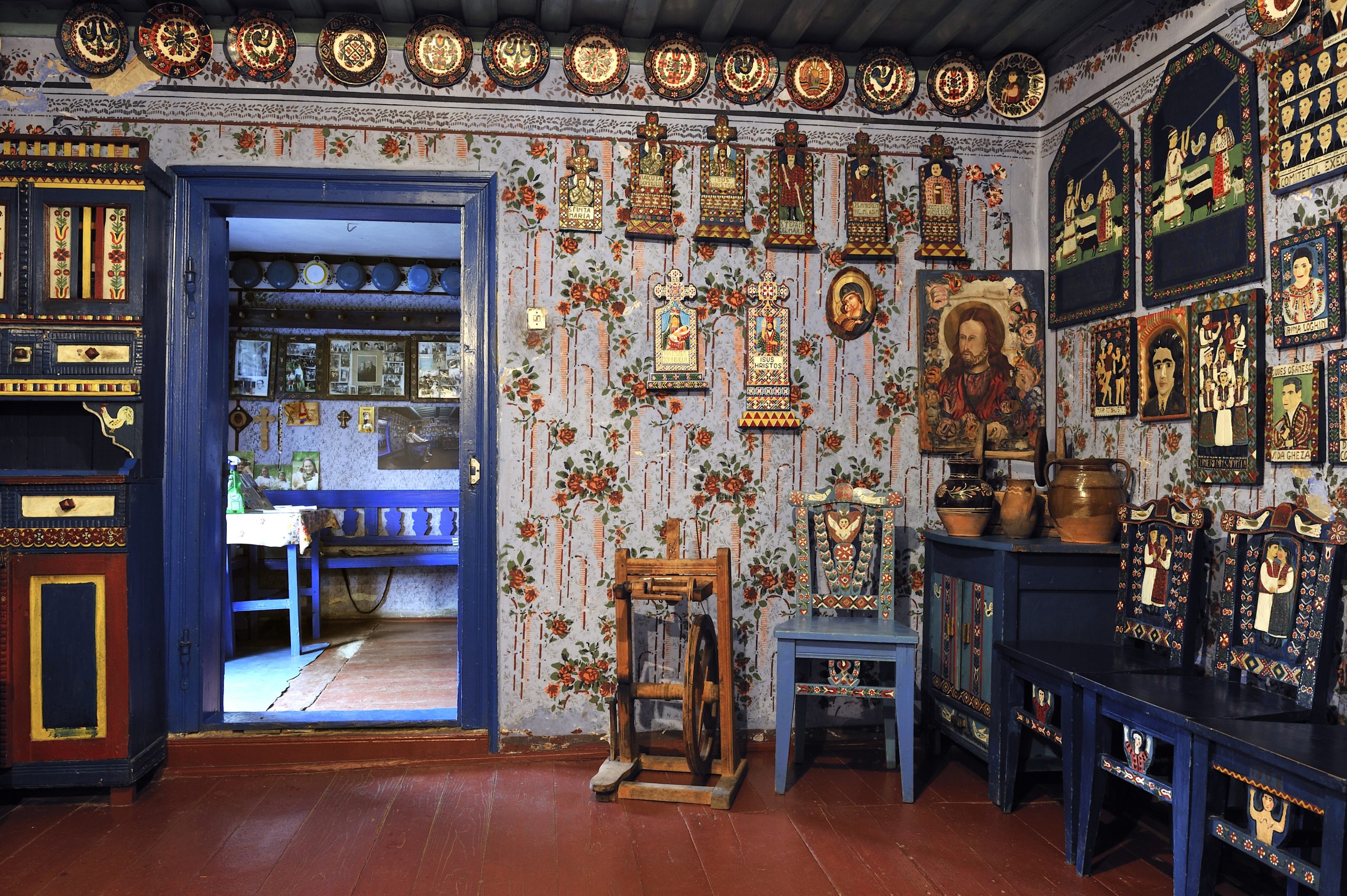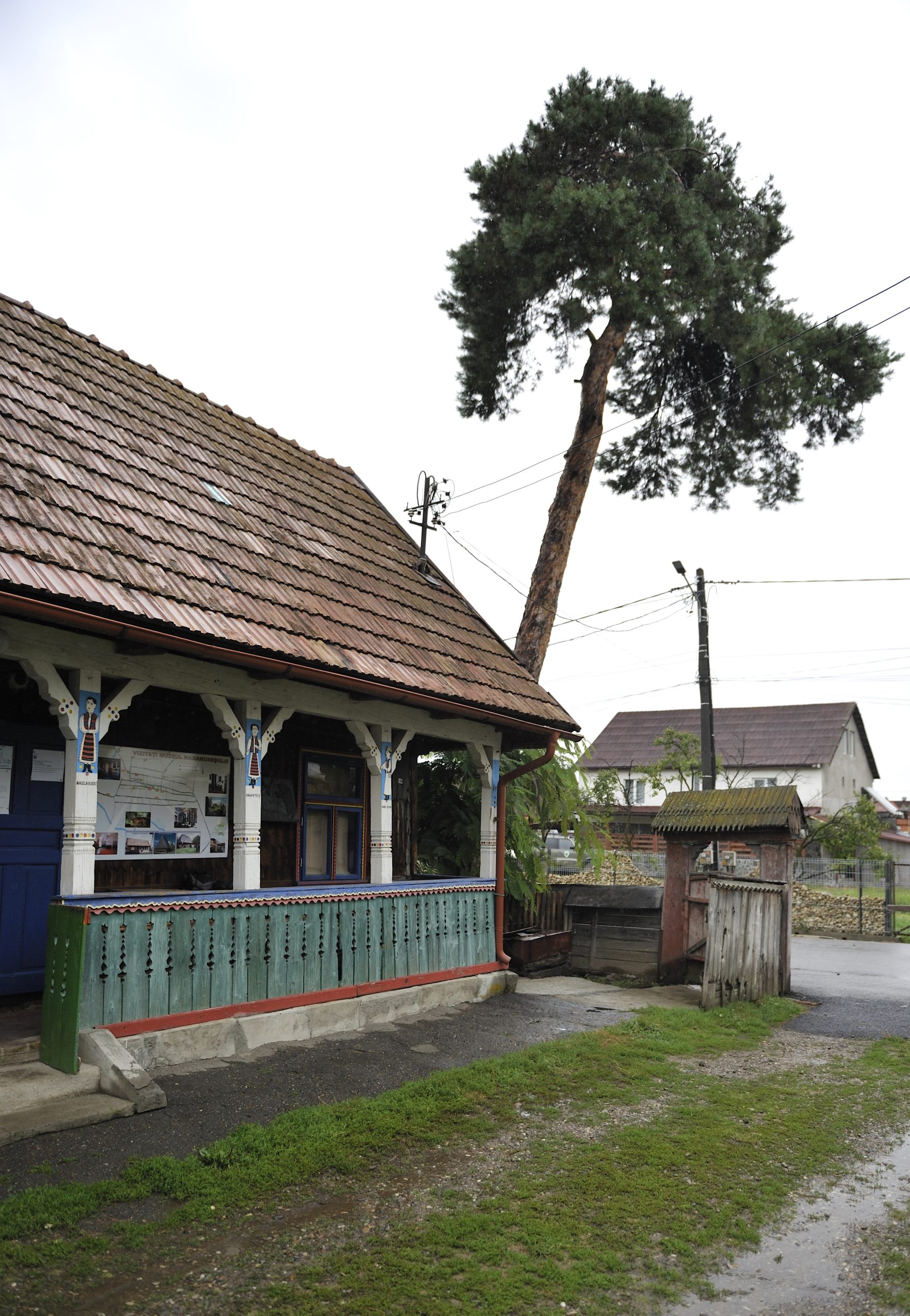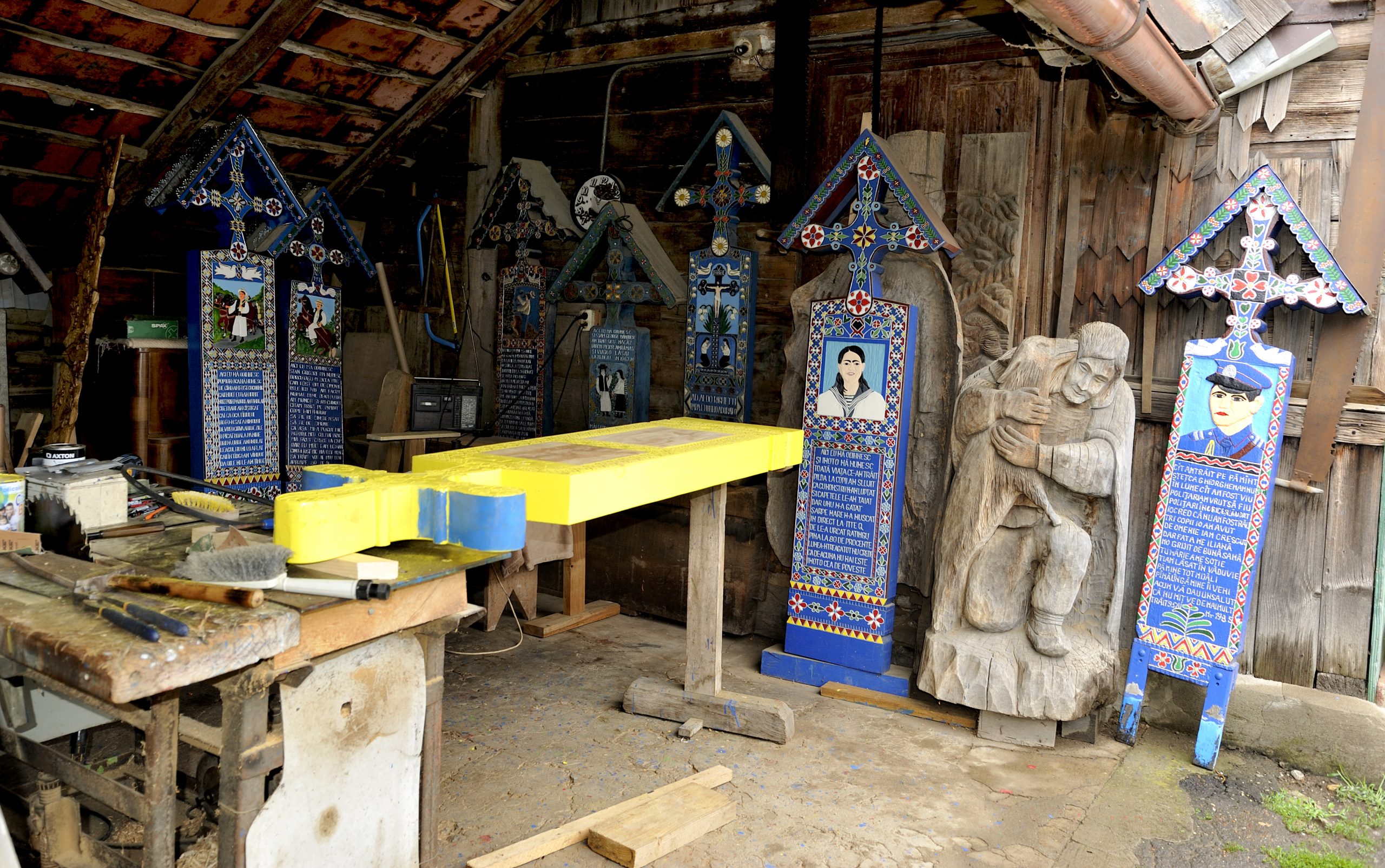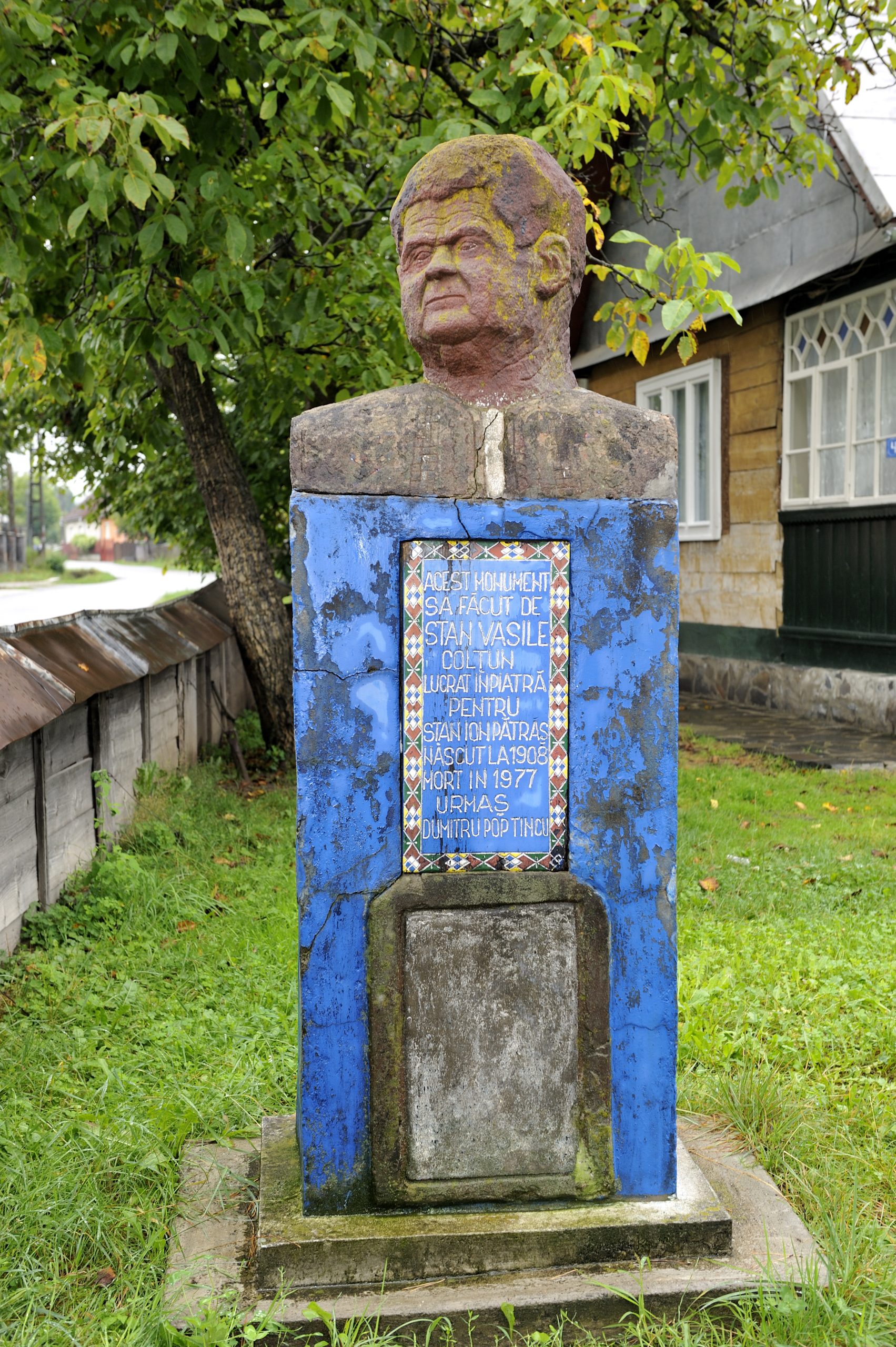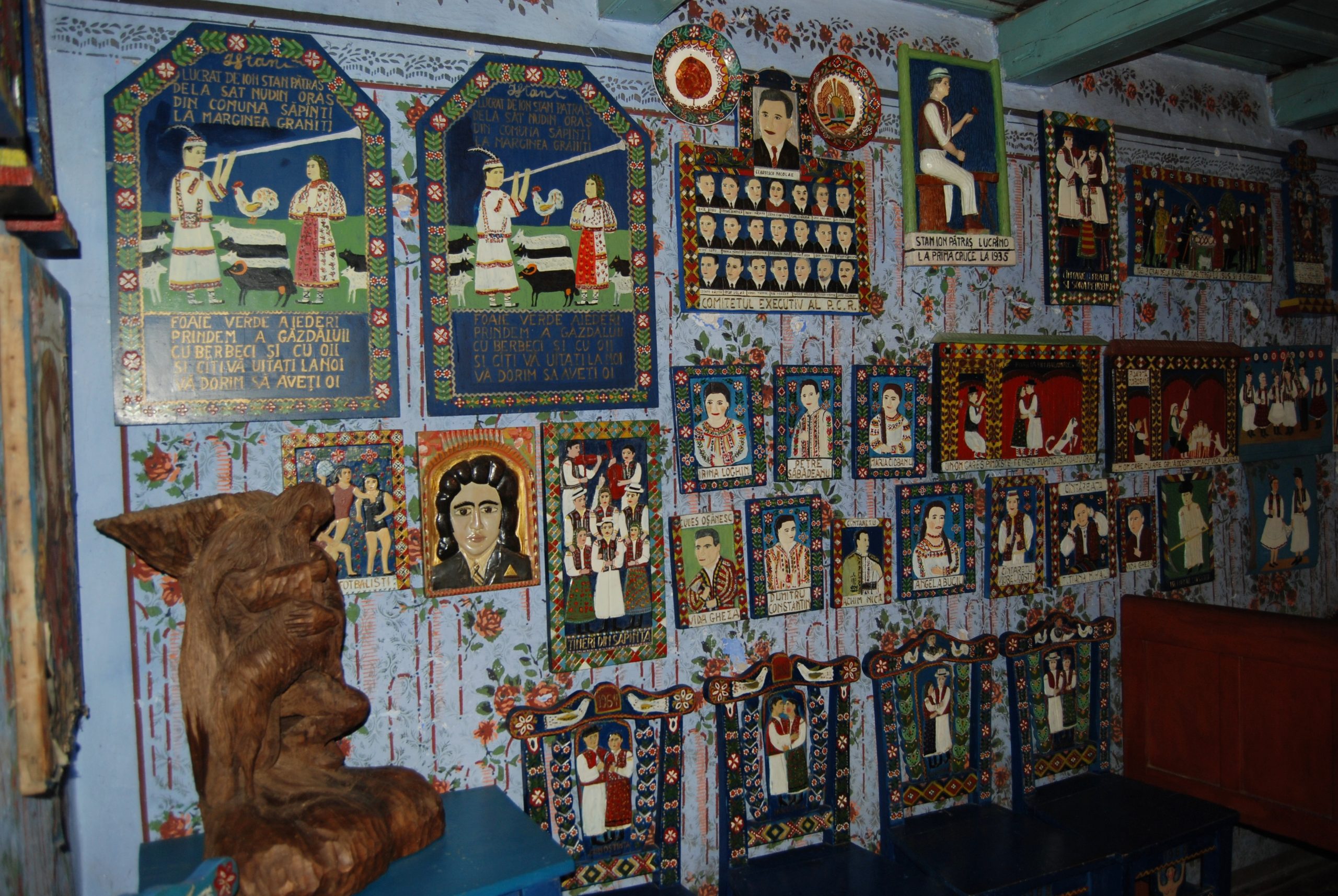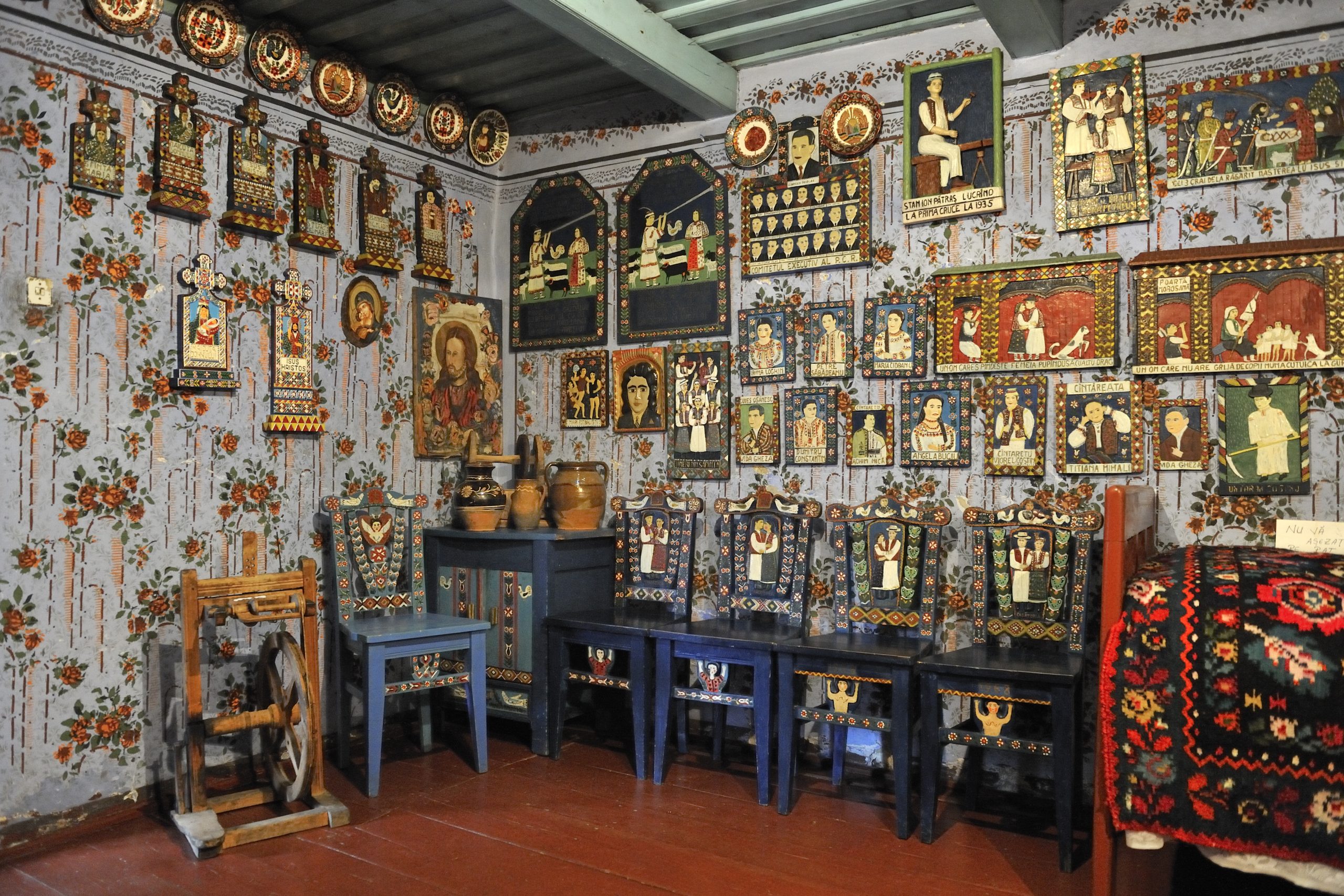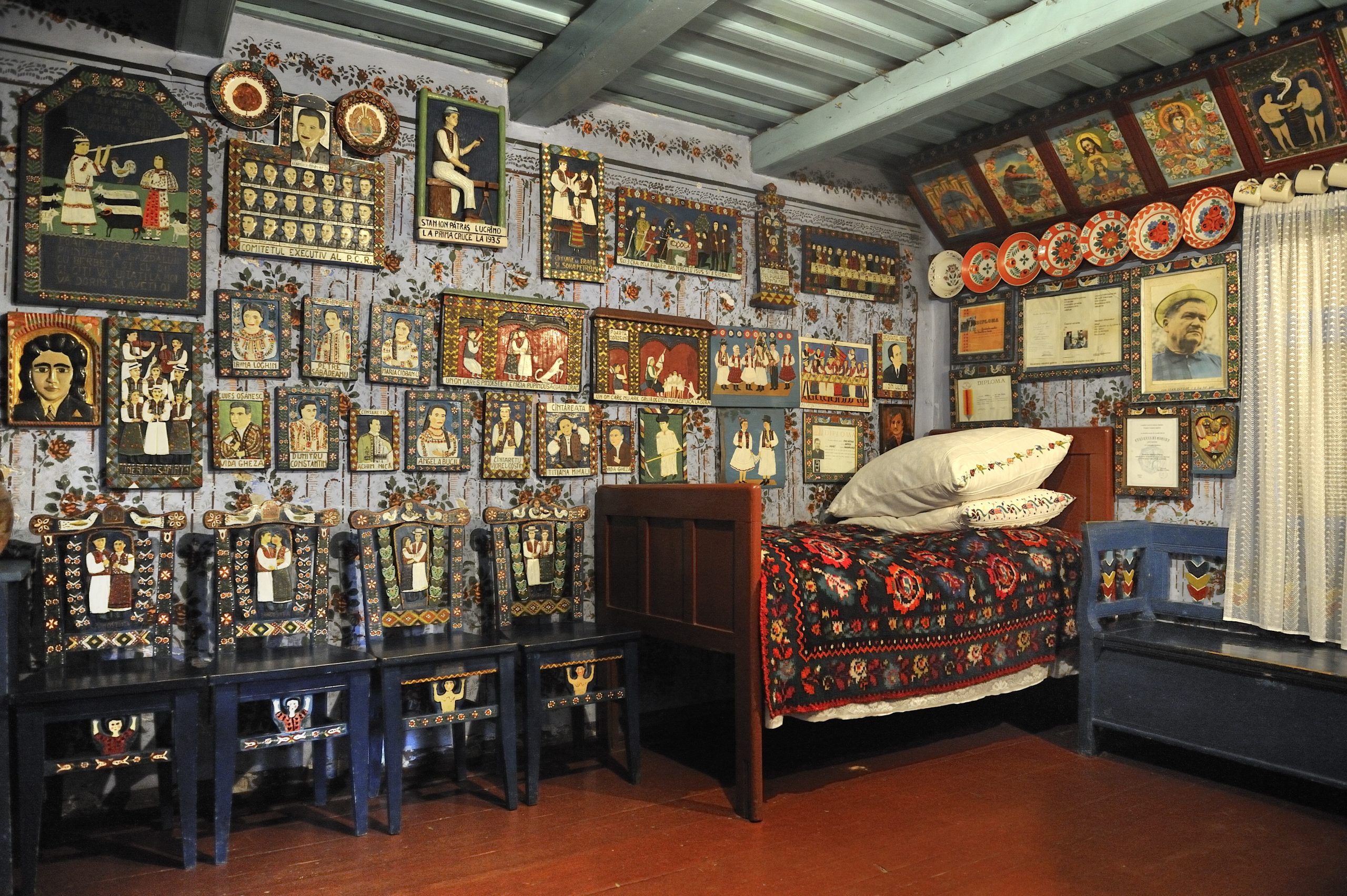Merry Cemetery, Săpânța.
Address: 517 Cimitirul Vesel Street, Săpânța commune 437305, Maramureş county, Romania
Address: no. 445, Săpânța 437305, Maramureş county, Romania
Phone: +40 749 403 207
One of the most famous tourist attractions in Maramures, the Merry Cemetery, is a unique place in the world that brings a bit of optimism to the perception of death. The cemetery is the result of many years of work by the master Stan Ioan Patras, who created real works of art.
The famous cemetery in Sepinka is located in the centre of the commune, near the parish church, and has more than eight hundred monuments of folk art, a real and comprehensive open-air museum. The monuments here have very different types and meanings.
Around 800 crosses, brightly coloured and carefully carved, complete the heritage of this place. In addition to flowers and bas-reliefs, the crosses also bear epitaphs describing, sometimes in a funny way, events in the life of the deceased.
The novelty of this cemetery is its separation from popular culture, which considers death a sad event. There is a hypothesis that Stan Ioan Patras was inspired by Dacian culture, which, starting with Ovid Densusianu, considered death a happy event. The first epitaph dates back to 1935, and since the 1960s, the entire cemetery has been inhabited by about 800 such crosses carved from oak, becoming an open-air museum of unique nature and a tourist attraction.
The specificity of this cemetery lies in its unusual monuments compared to other cemeteries. These are crosses carved from oak, painted and inlaid. All the crosses are painted a certain blue colour.
Because of its value and uniqueness in the world, thousands and thousands of visitors from all over the country and from all meridians come to admire and meditate on the famous Sepynets cemetery.
Since 2009, the cemetery has been the site of the annual Long Road to the Merry Cemetery festival.
Some of the crosses are painted on both sides. On one side is a description of the life of the buried person, and on the other side is a description of the cause of death. Most of the crosses have spelling mistakes and archaic writing.


